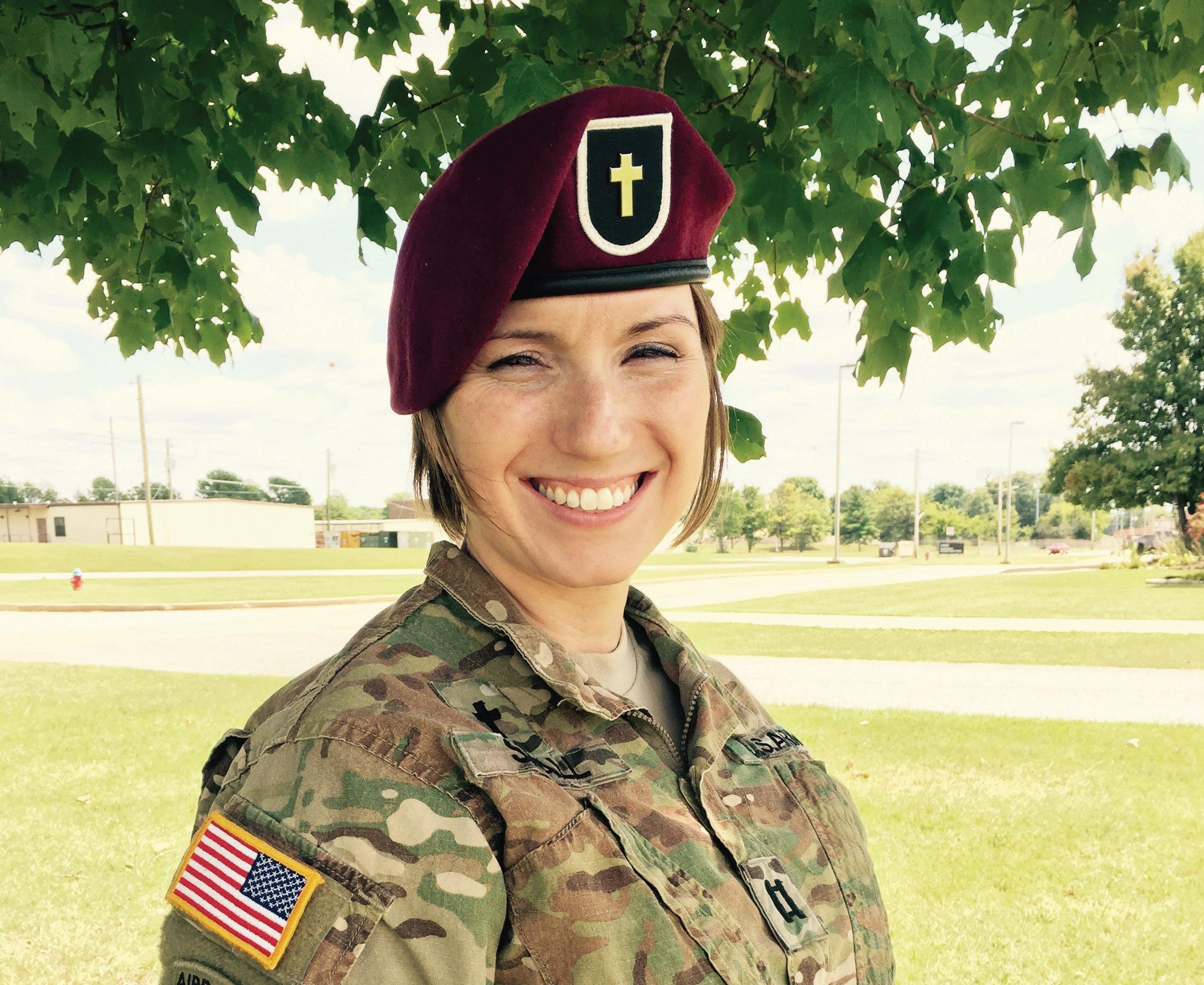






Dreaming of a new kitchen or need a new roof? Navy Federal home equity loans offer:
•
•
flexibility—Fixed-Rate Equity Loan¹ or Home Equity Line of Credit options² savings—$0 application and origination fees, and $0 closing costs— saving you hundreds opportunities—pay for a large expense or consolidate high-interest debt
• navyfederal.org/equity
Navy Federal is federally insured by NCUA.
Explore your options at navyfederal.org/equity

¹Home Equity Loans are fixed-rate loans. Rates are as low as 7.340% APR and are based on an evaluation of credit history, CLTV (combined loan-to-value) ratio, loan amount, and occupancy, so your rate may differ. A sample Fixed-Rate Equity Loan monthly payment based on $100,000 at 7.650% APR for 20 years is $814.79. Taxes and insurance not included; therefore, the actual payment obligation will be greater. Navy Federal will pay for all closing costs on new Fixed-Rate Equity Loan applications dated on or after 6/1/23. Covered closing costs include lender fees and fees paid to third parties, such as settlement fees, credit reports, flood determinations, property valuations (including appraisals, if required), title searches, lender’s title insurance, recording, mortgage transfer taxes, and government charges. For loan amounts of up to $250,000, closing costs that members may pay typically range between $300 and $2,000. The member is responsible for escrow payments and/or prepaid costs, if required, including property taxes and assessments, homeowners’ and flood insurance premiums, association fees/dues and assessments, and prepaid interest. You must carry homeowners’ insurance on the property that secures this plan. All loans subject to approval. Offer is subject to change or cancellation without notice. 2Home Equity Lines of Credit (HELOC) are variable-rate lines. Rates are as low as 7.750% APR and 8.750% for Interest-Only Home Equity Lines of Credit and are based on an evaluation of credit history, CLTV (combined loan-to-value) ratio, line amount, and occupancy, so your rate may differ. HELOC has a minimum APR of 3.99% and a maximum APR of 18%. Members who choose to proceed with an Interest-Only HELOC may experience significant monthly payment increases when the line of credit enters the repayment phase. Navy Federal will pay for all closing costs on HELOC applications dated on or after 6/3/24. Covered closing costs paid to third parties include settlement fees, credit reports, flood determinations, property valuations (including appraisals, if required), title searches, lender’s title insurance, recording, and government charges. The member is responsible for prepaid interest and escrow payments for first lien HELOCs. Member must carry homeowners’ insurance on the property that secures the HELOC. For loan amounts up to $250,000, closing costs typically range between $300 and $2,000. Applications for a HELOC include a request for a HELOC Platinum Credit Card. All loans subject to approval. Offer is subject to change or cancellation without notice. Rates are subject to change. HELOC loans are not available in Texas. © 2025 Navy Federal NFCU 14215 (7-25)


SDVM is a veteran-focused magazine throughout ALL San Diego & Southern California. It serves to assist all veterans, active military as well as their spouses and families.
It is the leading veteran magazine emphasizing resources & support and focusing on topics and issues facing today’s veteran community. SDVM focuses on resources, support, community, transition, mental health, inspiration and more...
The content is the driving force behind our magazine and the connection it makes with our veterans, service members, military families, and civilians.
The magazine is supported by the city of San Diego and a distinguishing list of veteran organizations & members, resource centers, coalitions, veteran advocates, and more. We are honored to share the work of so many committed and thoughtful people.
Despite all the challenges, our team has upheld their focus and let not one opportunity go to provide resources and support to our veterans & military personnel.
On behalf of our team, we wanted to take this moment to say THANK YOU to the readers and our military-veteran community for supporting our magazine. With that support we aim to make a difference and continuing to make a profound impact on the quality of life for our veterans, military personnel and their families.
If you want to catch up on the current and past issues, please visit: www.sandiegoveteransmagazine.com/archives
Mike Miller
Editor-In-Chief
mikemiller@sdvetsmagazine.com www.sandiegoveteransmagazine.com
Publisher Editor-In-Chief
Mike Miller
Monthly Columns
What’s Next In Transition
Eve Nasby
Human Resources
Paul Falcone
Franchise Dreams
Doug Dwyer
Successful Transitioning Stories
Dr. Julie Ducharme
Veterans in Business
Barbara Eldridge
Risky Business
Hadley Wood
Real Talk: Mental Health
Hope Phifer
PTSD: Reclaiming Control
Robert ‘Bob’ Cuyler, PhD
Legal Eagle
Kelly Bagla, Esq.
Veterans Chamber Commerce
Joe Molina
Midway Magic
David Koontz
Veterans Chamber Commerce
Joe Molina
Contributing Writers
Wounded Warrior Project
Disabled American Veterans
(In-House) Correspondents
Holly Shaffner
CJ Machado
Lori Noonan













Lying about his age, he was only 16 years old when he joined the Navy in 1943. Within months of his enlistment, Al Hansen came face to face with the enemy flying as a gunner on a Navy patrol bomber in the Pacific Theater.
“I wasn’t scared,” remembered the 98-year-old Hansen, who flew more than 20 combat missions during the war. “When you’re 16 years old, nothing can happen to you, but it turned a 16 year-old kid into a man overnight.”
Hansen was one of 10 World War II veterans who were honored during the USS Midway Museum’s “Heroes Among Us” tribute held in conjunction with this year’s 80th anniversary of the end of the Second World War. The event was a rare and powerful opportunity to meet these humble heroes who personify America’s Greatest Generation. The veterans, who represented the Navy, Marine Corps, Army, Army Air Corps and Coast Guard, gathered on Midway’s hangar deck to interact with museum guests and hear their stories.
For museum visitors, the event was more than just a “meet & greet,” it was a chance to pay tribute and thank those men and women who answered the call of duty more than eight decades ago, and fought for freedom and democracy on battlefields around the world.
"It was important for us to meet them so that we have a better understanding of our history,” said Brittani Landy, who was visiting Midway with her husband Tim and son Luke. “This helps us understand the sacrifices they made and how they fought for the freedoms that we all enjoy today.”

Brittani Landy, and her husband Tim and son Luke, talk to Navy veteran Roy Mosteller.
“It is up to us to let people know there are some of us military veterans still left from World War II,” said 101-year-old Walt Travis, who served with a Marine Corps fighter squadron that was deployed to Guadalcanal, New Guinea and the Philippines during the war. “People need to hear our stories, and see that we made a difference for America and the world.”

More than 16 million Americans wore the uniform of the nation during World War II. Sadly, it is estimated that fewer than 100,000 of these veterans are still alive today. Meeting the World War II veterans on Midway was a chance to ensure the service and sacrifices of the Greatest Generation are never forgotten.
“I hope that they learn a little bit about World War II by learning a little bit about us,” said Ena Slaughter, a former Coast Guard hospital corpsman who recently turn 100 years old. “I also hope that other young men and women will want to be part of the military and serve their country today.”
The 10 veterans ranged in age from 98 to 104 years old. For Midway guests, this event was more than just the chance to casually meet these American heroes

in person, but also to talk to them and understand their experiences during the war.
“Sometimes we take it for granted in our work that we get to hang out with the military veterans all the time,” said Holly Shaffner, who is the vice chairman and public relations director for Honor Flight San Diego. “For some of the museum visitors, who came from all over the country, this may have been their first time interacting with a World War II veteran. One visitor told me that they chose to come to the Midway because of this event.”
As moving as it was for Midway’s guests, the experience was just as rewarding for the veterans.
“I truly loved talking to all the people on Midway,” said Slaughter, who was in Time Square during the public celebration at the end of the war. “I think I got as much from them as they got from me.”
“This was important to my dad,” said John Dioli, whose 98-year-old father, Art Dioli, served in the Navy on the USS Wilmette during the war. “He loves remembering the past and sharing stories of serving in World War II, especially with the younger generations who know very little if anything at all about the war.”
The event ultimately served to help these veterans connect their experiences more than 80 years ago to the present.
"We were grateful to meet them,” said Kathy Harnish, who was visiting Midway with her husband James. “I’m sure some of their friends and buddies never came home, so it’s important for us to honor them.”

www.midway.org/contact/volunteer-opportunities
www.midway.org
At Mt. Soledad National Veterans Memorial, 822 feet above sea level, visitors don't just see stunning views of San Diego; they witness the living connection between military service and the community it has shaped for over a century. With more than 7,200 black granite plaques honoring veterans from every conflict, campaign, theater, and branch, the memorial stands as San Diego's gathering place where military service and community connection intersect. This Veterans Day, November 8th at 11:00 AM, you're invited to be part of something historic: a ceremony celebrating the 250th anniversaries of the United States Navy and United States Marine Corps. This commemoration isn't just about national milestones; it's about recognizing how these two services helped build the San Diego we know today and continue to support the veteran community that calls this city home.
The story we'll honor begins over a century ago when the Navy and Marine Corps established their enduring presence in San Diego. During the critical 1916-1920 era, the region became home to Naval Air Station North Island and Marine Corps Recruit Depot San Diego, installations that would transform the city into a cornerstone of American military power. Leaders like Commander Theodore Gordon "Spuds" Ellyson, the Navy's first aviator and a pioneer of naval aviation at North Island, and Major General Joseph Henry Pendleton, the first commanding officer of MCRD San Diego, played pivotal roles in shaping these installations and their lasting impact on the region. Their contributions helped establish the infrastructure for what would become one of the nation's largest veteran communities. Today, San Diego is home to over 240,000 veterans who have chosen to stay, transition into civilian careers, start businesses, and become civic leaders.
This year's ceremony promises to be particularly meaningful. Vice Admiral Charles Martoglio, U.S. Navy (Ret.), will deliver keynote remarks that connect the Navy-Marine Corps legacy to today's veteran community and San Diego's future. KUSI news anchor and Good Morning San Diego host Jason Austell will serve as master of ceremonies, guiding attendees through a moving program that honors all who have served while celebrating the unique partnership between these two services and our city. The free, public ceremony brings together active-duty personnel, veterans at every stage of transition, military families, and civilians in a powerful reminder that in San Diego, service is honored not just on Veterans Day but woven into the fabric of our community every day.
Saluting the history of the Navy and Marine Corps, and their enduring impact in San Diego.
SAT • NOV 8 • 2025 • 11AM www.soledadmemorial.org


This Veterans Day, the Mt. Soledad National Veterans Memorial will honor all veterans, paying
tribute to the

legacy of the
and Marine Corps and their strong
with San Diego. We will recognize two historic installations, Naval Air Station North Island and Marine Corps Recruit Depot San Diego, and two men who represent their origins: Commander Theodore Gordon "Spuds" Ellyson and Major General Joseph Henry Pendleton. This event is a powerful reminder of how their

under the Marine Corps flag; and the “Marine Corps 250” NASCAR race in Martinsville, Virginia.
San Diego Veterans Magazine recently interviewed Major General James W. Lukeman, President and CEO of the Marine CorpsHeritage Foundation, as he reflects on 250 years of Marine Corps history and itsenduring values of courage, honor, and service. As the nation celebrates this milestone, he shares how Americans can join the mission—by visiting, donating, and helping preserve the Marine Corps’ legacy for future generations.
SDVM: Tell us about yourself and what the Foundation does?

Lukeman: I grew up in a Marine Corps family, was commissioned via Notre Dame ROTC, and served 40 years on active duty before retiring and joining the Marine Corps Heritage Foundation. Our mission is simple and important: preserve and share the history, traditions, and culture of the Marine Corps and educate all Americans in its virtues. The National Museum of the Marine Corps, just outside Quantico, is our flagship (19 years strong and more than 7.5 million visitors), and it tells 250 years of American history through the eyes of Marines.
SDVM: The Marine Corps turns 250—what’s the story behind the birthday, and why does it matter now?
Lukeman: The Corps was born in a Philadelphia tavern (Tun Tavern) on November 10, 1775, when the Continental Congress authorized two battalions of Marines to serve with the Navy. In 1921, our Commandant, LtGen John A. Lejeune, directed that every year, on the anniversary of the Corps, Marines pause and reflect on our history and who we are. Marines remember that the reputation we have today has been passed to us by those that have gone before. The 250th isn’t just a birthday; it’s a national reflection on values we want to renew – honor, courage, selfless service, pride in being a Marine Corps and pride in our country.
SDVM: How has the Foundation been celebrating the 250th across America this year?
Lukeman: We’ve been taking the story beyond the Museum walls with a year-long, nationwide campaign— color guards and Chesty the Bulldog on the floor of the Westminster Dog Show; a Marine flag parachuting in at a world-class equestrian event; sailing the USS Constitution
At the Museum, visitors experience immersive galleries that place you at pivotal moments from 1775 to today. It’s all about reconnecting Americans—veterans, families, and first-time visitors alike—with what Marines have given to the nation for 250 years.
SDVM: What are the best ways to donate or get involved—at any level?
Lukeman: Here are a few ideas.....
• Give now: Visit MarineHeritage.org to make a onetime or recurring gift by card or check. Every dollar fuels preservation, education, and Museum programs.
• Amplify your impact: Ask your employer about matching gifts; many double or even triple donations.
• Legacy & planned giving: Consider the Foundation in your estate plans; planned gifts sustain the mission for the next generation.
• Visit & bring others: The National Museum of the Marine Corps (near I-95 at Quantico) is open daily 9–5 when the federal government is open.
• Share the stories: Explore Marine250.com for anniversary content and “Marines Across America” profiles. Do you know a Marine—active duty or veteran—who has made a significant impact in their community? We encourage you to submit their story at www.marine250.com/marines-across-america#MAA.
• Corporate & community partners: Businesses can underwrite exhibits, education, digitization of archival film, or special 250th programs.
SDVM: What leadership lesson from the Corps guides this work and what’s your final ask of Americans this year?
Lukeman: Leadership is about earning the trust of those you lead. The job of a leader is to put your people first, equip them to succeed, and steward the mission. As we at the Marine Corps Heritage Foundation celebrate the 250th anniversary of the Marine Corps, we’re asking all Americans to remember what the Marine Corps, and Marines, have done for our nation for 250 years.
Visit. Give what you can. Share the stories. Help us preserve the legacy so every young American can see what courage and selfless service look like and be inspired to carry it forward.

By David Koontz, USS Midway Museum Director of Marketing

San Diego County boasts one of the largest veteran populations in the United States with more than 200,000 former and retired military members living and working in the county. The San Diego Veterans Day Parade, which began in 1987, continues to be the largest parade on the West Coast that salutes military veterans.
The annual parade, under the leadership of the USS Midway Museum, features more than 80 enthusiastic participants including a variety of bands, floats, ceremonial vehicles and marching units from veterans organizations, military commands, local businesses, and community service and civic groups.
“It’s imperative that we continue to salute all of our military veterans,” said Terry Kraft, the USS Midway Museum’s president and CEO. “All Americans owe a tremendous debt of gratitude to the sacrifices made by our servicemembers, many paying the ultimate cost, in defending democracy around the world and the freedoms we have all enjoyed for nearly 250 years.”
The parade’s sole goal is to recognize and honor all veterans who have worn the uniform of the nation, especially those veterans living in San Diego County.
“The San Diego Veterans Day Parade is more than a parade, it's a living tribute for all San Diegans who’ve served our country,” said Mayor Todd Gloria, the parade’s grand marshal. “San Diego is a proud military town, and I am always thrilled to see such enthusiasm and support for our veterans and servicemembers. I look forward to seeing this annual tradition continue to flourish in the years ahead.”
Over the past two years, the parade has also placed a special emphasis on the veterans of World War II in conjunction with the 80th anniversaries of the D-Day Invasion and the end of the war.
“I’m greatly appreciative that the World War II veterans are being recognized for what we did more than 80 years ago,” said Al Hansen, a Navy veteran who fought in the Pacific Theater and will be one of the grand marshals in the 2025 Veterans Day Parade.
“In some way, I think this is just helping people know that there was a World War II as so many younger people aren’t being taught about it in school today. I’m glad they can learn about it from us.”
More than 10,000 people turn out annually to watch the parade which marches down Harbor Drive, along San Diego Bay, between the County Administration Building and the USS Midway Museum.
“Their duty has not gone unseen and we still have a nation that’s appreciating their service,” said Donald Thomas, a 20-year Army veteran who regularly attends the parade as a spectator. “I love it that we’re showing we’re grateful for what the service has done.”
It’s vital, especially in a Navy and Marine Corps town like San Diego, that the service and sacrifice of America’s military veterans are remembered and honored.
The USS Midway Museum plans to continue the tradition of holding the parade in America’s Finest City.
“We’re proud to be able to carry on the nearly 40-year tradition of hosting this important tribute parade in San Diego each year,” said Steve Miller, Midway’s strategic partnership director and a member parade’s planning committee. “Being able to publicly salute all veterans, especially our World War II veterans, is critical in helping future generations better understand the service and sacrifices made by our American military heroes.”
“The parade is marvelous,” said Ray Flores, a Marine Corps veteran who has participated in the parade. “I’m just so thankful that everybody could come out and enjoy the day, and thank all those who have served.”
POINT Harbor Drive
(In front of the County Admin Building)
Nov • 11 • 2025 10:00 a.m.
sdvetparade.org
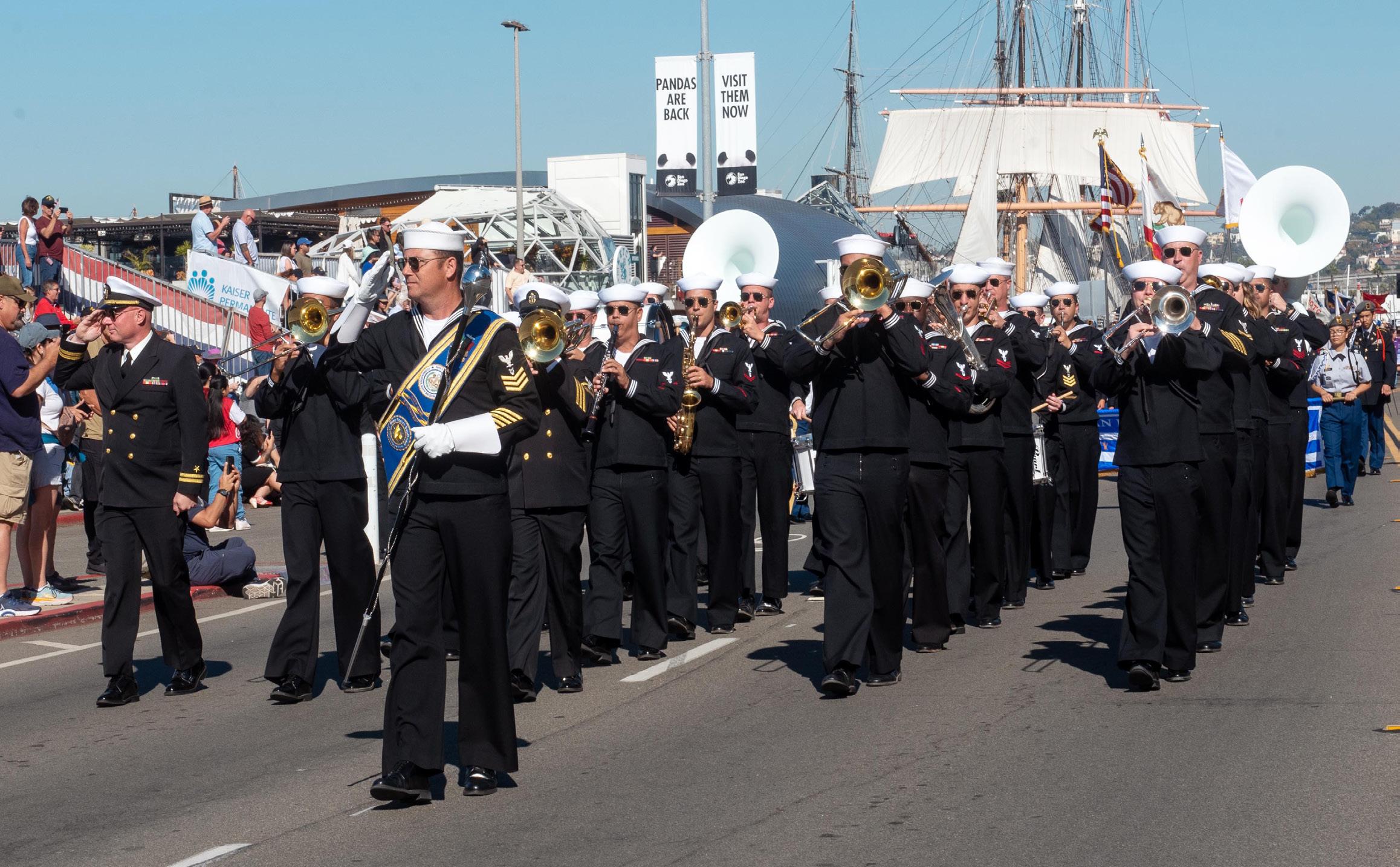

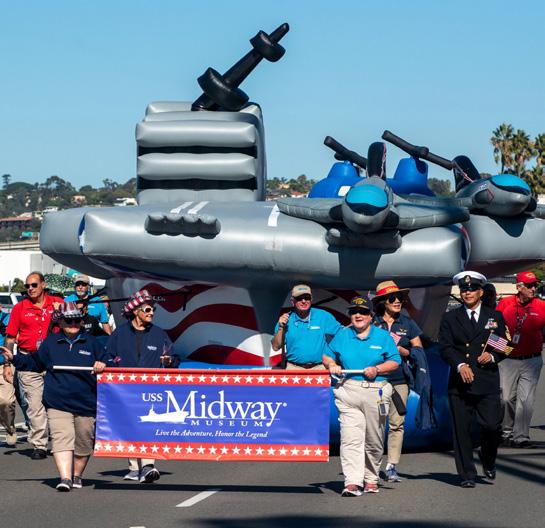
“The San Diego Veterans Day Parade is more than a parade, it's a living tribute for all San Diegans who’ve served our country,”
- Mayor Todd Gloria


































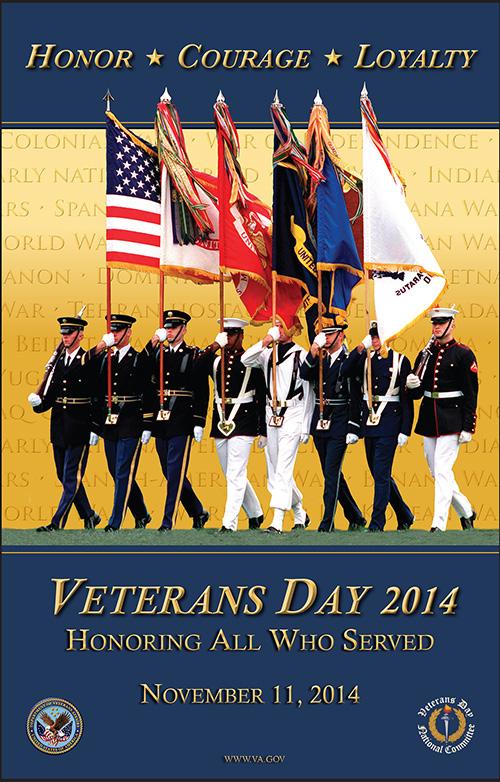
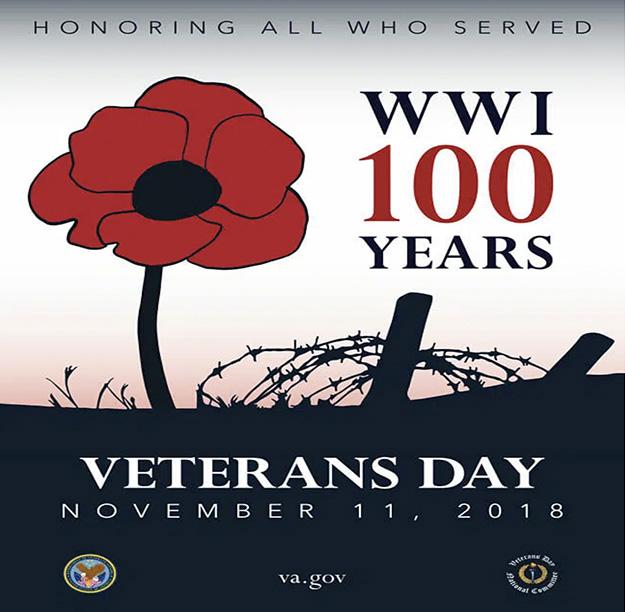

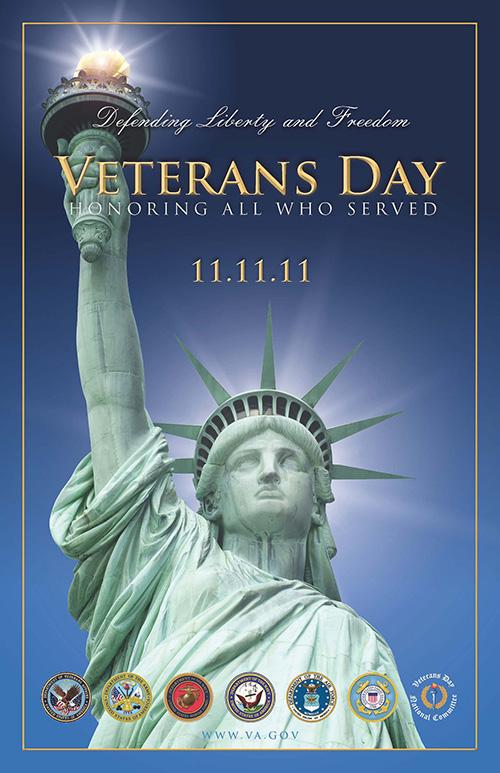











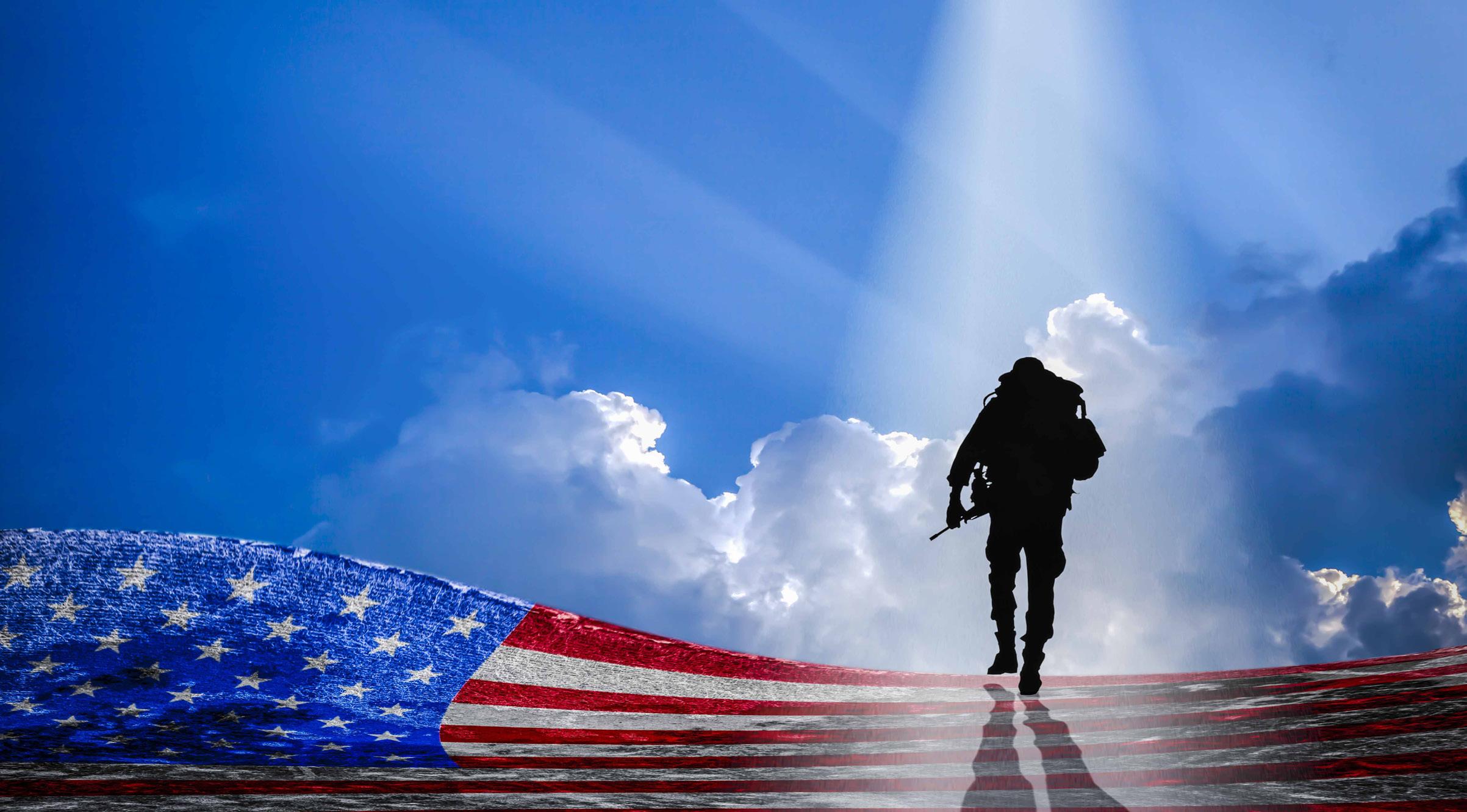
Veterans Day, a federal holiday that falls on November 11th, is designated as a day to honor the more than 21 million men and women who have served in the U.S. military.
It was first observed on November 11, 1919, as Armistice Day in honor of the first anniversary of the end of World War I, which officially ended on the “eleventh hour of the eleventh day of the eleventh month” in 1918. In 1926, Congress called for an annual observance of the anniversary and by 1938 it was an official federal holiday. A few decades later, in 1954, President Dwight D. Eisenhower officially changed the name of the holiday from Armistice Day to Veterans Day, as it is currently known today.
Thanks to the Uniform Holiday Act of 1968, the holiday was moved from its November 11 date to a less-defined “fourth Monday in October” so workers could enjoy a long weekend. However, this move didn’t last long. In 1975, President Gerald Ford returned the solemn day back to its original November 11 to honor the global historical significance of the day.
While it is important to thank all those who have served or are serving on a regular basis, on Veterans Day it’s especially important to take an extra moment to show military members gratitude for their sacrifice.
Memorial Day, which is celebrated on the last Monday in May, honors service members who have died in military service to the nation. The holiday has roots dating back to the post-Civil War era, when citizens would informally place spring flower memorials on the graves of fallen soldiers.
On May 20, 1868, over 5,000 first-ever National Decoration Day participants decorated the graves of the 20,000 Union and Confederate soldiers buried at Arlington National Cemetery. By the late 1800s, cities and communities across the United States began to observe the day and several states declared it a legal holiday. Over the next few decades, the day transitioned from being called Decoration Day to its current name of Memorial Day.
In 1968, Congress passed the Uniform Monday Holiday Act, which established Memorial Day as the last Monday in May instead of a set calendar day. By 1971, the threeday weekend for federal employees went into full effect.
Today, Memorial Day is often associated with the start of summer, discount sales and cookouts with friends. But you have the power to educate those around you and take a few moments to pay tribute to the fallen while still enjoying the sunshine and outdoors.

Giselle Vallejo, MA, LPCC, Lead Clinician
The Steven A. Cohen Military Family Clinic at VVSD, San Diego www.cohenveteransnetwork.org
Dear Veterans,


At The Steven A. Cohen Clinics at VVSD, in San Diego, Oceanside and Los Angeles, we have had the privilege of connecting with so many of you, your families, as well as active-duty service members and their loved ones, each with your own story of courage, resilience, and commitment.
While we have the honor of supporting you through the services we provide, we recognize that we don’t always get the opportunity to express just how deeply grateful we are to serve you. Your strength and openness continue to inspire us every day.
As the year draws to a close and the holiday season approaches, we wanted to take a moment to pause and reflect on the incredible veterans that surround us. This season is a reminder of the importance of gratitude and of taking time to acknowledge the people and experiences that give our work meaning.
Below, each member of our San Diego clinic team shares a few words of thanks and appreciation for our veteran clients, family, partners, and community members. These messages come from the heart and reflect the collective gratitude we feel for all you have done and continue to do in service of others and in your own journeys of healing and growth.
- Thank you to our veterans and active-duty service members for their bravery – not just physically, and emotionally with the strength they show through their vulnerability.
• Leslie Amaya, Clinician
- Thank you for your hard work, dedication, and selflessness! I admire all that you’ve done and continue to do. Thank you!
• Jill Neufeld, Intern
- Thank you for sacrificing your time, for spending countless hours away from your family and friends, and for being so brave to do all the things you did. I appreciate you more than you will ever know and I am honored to bear witness in trusting us to be your true self. I am so proud of you, and I hope you feel the gratitude you deserve.
• Giselle Vallejo, Lead Clinician
- I would like to take this time to say how grateful I am for your service. I understand how challenging it can be to balance your time between family, life, and service in the military. Thank you for your service.
• Shawn Grant, Clinician and U.S. Marine Corp Veteran
- I am so amazed by your resilience, patience, and courage. It’s an honor to sit with you and hear about what you’ve been through, and I appreciate your willingness to show up and do the hard work. Thank you for your sacrifices and all you do!
• Julia McMullen Kharkar, Clinician
- Happy Veterans Day! I hope you are able to relax and take care of yourself after all the mental/physical/ emotional work you’ve done and continue to do.
• Kelly Finney, Clinician
- Thank you for your service. Thank you for your strength and endurance in all of the difficult times you may have experienced. Your braveness and strength does not go unrecognized.
• Paola Ramos, Billing Coordinator
- Thank you for all you’ve done for our country. Your contributions have made all the difference, even if you don’t see it right away.
• Kimberley Bradshaw, Front Office Billing Coordinator
- As a civilian, I have a deeper appreciation for this community’s sacrifice and what it means to be courageous. Being able to open up to a stranger and address personal things weekly is inspiring. It motivates me to be there for them every session.
• Carlos Cantu, Fellow
- I am deeply grateful to all who have served our country, but I am especially grateful to my husband. As a military spouse, I witnessed firsthand how he gracefully balanced the demands of military life with the responsibilities of family life. After long days of service, he was always intentional about his evening transition, shifting from Marine to husband and father with care and presence. I am profoundly thankful for his unwavering support, his love of our country, his dedication to service, and, most of all, his love for our family.
• Shuna Ball, Regional Clinic Director, U.S. Navy Veteran and Military Spouse

We encourage you to connect with us at one of our clinics for mental health support by visiting vvsd.net/cohenclinics or utilize our free, online Tools for Stress and Worry by visiting cohenveteransnetwork.org/tools-for-stress-and-worry

By: Robert ‘Bob’ Cuyler, PhD Psychologist and Trauma Expert


As if the distress wreaked by post-traumatic stress isn’t enough, the pain is compounded by factors both in society and well as within individuals. There are some heartening signs that stigmatizing attitudes regarding PTSD have softened in recent years, in part, because it is increasingly acknowledged as a civilian as well as a military condition. The pandemic’s widespread traumatization led to new awareness that none of us are immune from the impact of terrible events. Still, while veterans are routinely thanked for their service, some problematic attitudes about the effects of trauma persist within both military and civilian cultures. Strength, the ability to tough it out, self-reliance, and the commitment to put one’s life on the line for country and peers - these important values of military culture, unfortunately, don’t prepare soldiers well for the consequences of trauma. An additional factor is that many activeduty members may avoid treatment for fear that revealing their condition may affect their careers. Beyond the external factors of societal stigma and threat to career, some characteristics ‘on the inside’ complicate PTSD. Two important characteristics are termed ‘Trauma-related guilt’ (TRG) and Mental Health Self-Stigma (MHSS). These factors are seen in the research literature as related to PTSD severity as well as reluctance to seek help or treatment dropout.
Let’s first address trauma-related guilt. Militaryrelated trauma, particularly for those who served in combat, readily provokes TRG in the witnessing of harm to others, the belief (rational or irrational) that harm could have been prevented or minimized, and moral injury (belief that one either did or failed to do something in violation of one’s values). As a consequence, this guilt can lead individuals to believe that they deserve their distress and should be punished rather than helped.
Mental Health Self-Stigma referrers to a cognitive process in which individuals internalize stigmatizing attitudes, including the following: veterans with PTSD
are damaged, volatile, unpredictable, unable to adjust to civilian life. These attitudes worsen PTSD symptoms and increase risk of the condition becoming chronic. MHSS often leads to demoralization where the motivation to seek help or believe that relief is possible shrinks away.
The shift toward health and recovery fundamentally involves challenging the belief that one is weak, responsible for the pain, and deserving of punishment. In our experience treating over a thousand veterans, we’ve seen all these struggles, but we’ve also seen recovery. Taking the first step in seeking help is hard, and so it sticking with it even if you are a) skeptical that anything can help you, b) initially believing that you don’t deserve relief, or c) persisting even when results are not immediate.
PTSD is not weakness or a moral failure, it’s an injury, an invisible injury. Guilt is a haunting emotion, but it can be processed and healed despite inner beliefs that guilt must be punished. Self-stigma can dissolve if you regard yourself with the compassion you extend to others.

Veterans have faced many challenges, and we encourage those affected by PTSD to take the challenge of seeking relief, both for yourself and for those you love.

Dr. Cuyler is chief clinical officer of Freespira, an FDA-cleared non-medication treatment that helps people with panic and PTSD manage their symptoms by learning how to regulate their breathing. www.freespira.com
“I am shocked and surprised that this treatment worked. When I think about PTSD, I think about the brain and this being a brain problem… There is no denying the calming effect this treatment had on me. This has made a significant difference in my personal life. This treatment is remarkably effective.”
— Kevin, US veteran whose symptoms included social anxiety and monthly panic attacks before he found Freespira





By Lt. Cmdr. William Reynolds, USN, (Ret.), PA-C

Military personnel face significant mental health challenges, including post-traumatic stress disorder (PTSD), depression and substance use disorders. In 2022, approximately 17.6% of active-duty service members sought treatment for psychological health concerns. Servicepeople, though, often encounter significant stigma when seeking mental health treatment. This stigma, deeply rooted in a military culture that emphasizes resilience and self-reliance, leads many to perceive seeking help as a sign of weakness. It takes tremendous courage to ask for help, but recovery is possible, and veterans and military personnel do not need to live with PTSD symptoms.
The military emphasizes the importance of mental readiness and resilience, recognizing that untreated mental health issues can adversely affect an individual’s performance as well as military unit cohesion. The Department of Defense has implemented policies to encourage mental health care while minimizing career repercussions. The Brandon Act, for example, was enacted in May 2023 and aims to improve access to mental health services, encouraging early intervention and allowing service members to seek help confidentially without fear of negative career impacts.
Residential mental health treatment provides a structured, 24/7 environment for individuals requiring intensive care beyond outpatient services. These programs incorporate therapies addressing trauma and stressors specific to military service and are tailored to the unique needs of those whose lives have been disrupted by various mental and behavioral health concerns. This comprehensive, personalized approach aims to equip service members
with coping strategies and support systems, facilitating their return to duty or transition to civilian life.
It’s also important to look at underlying physical comorbidities. Some programs, like the Sierra Tucson Red, White, and Blue Program, start with a physical examination complete with appropriate lab work which is essential to identifying physical issues that may mask as psychological problems. Hypothyroidism, for example, often presents as depression.
Recognizing the existence of a mental health problem is a crucial first step toward successful treatment and recovery. Denial often serves as a barrier, preventing service personal from recognizing the severity of their condition and ultimately delaying the necessary help. By confronting the reality of their struggles, military members can move beyond denial and open the door to therapeutic support systems. Acceptance also enhances the effectiveness of treatment by increasing an individual’s commitment to the recovery process. When veterans and military personnel acknowledge their problems, they are more likely to participate actively in therapy, adhere to prescribed treatments, and implement coping strategies. Plus, this acknowledgment also plays an important role in reducing the stigma associated with mental health and addiction issues.
For additional resources, active duty and veteran members of the military are encouraged to visit: the National Center for PTSD (www.ptsd.va.gov), Military OneSource (www.militaryonesource.mil), and the U.S. Department of Veterans Affairs Mental Health websites (www.mentalhealth.va.gov).
PTSD is a diagnostic code that the healthcare industry uses, but the word “disorder” in Post Traumatic Stress Disorder stigmatizes a very normal, human response to abnormal situations. PTSD has also been with us since the invention of warfare. Fortunately, with advances in mental health care, treating this potentially debilitating condition is highly effective. There is hope for active duty and military veterans to return to living well in recovery.
Lt. Cmdr. William Reynolds, USN, (Ret.), PA-C, is Director of the Military and First Responder Trauma Recovery Program at Arizona-based mental health treatment facility Sierra Tucson.

For more information, visit: www.sierratucson.com/programs/military





Nestled along the San Diego River, Thousand Branches Wellness in Mission Valley, CA provides a welcoming environment for teens and adults (ages 12+) who need behavioral health services. Our main goal is to guide patients on their path toward mental and physical well-being.
For those who have served in the military or are part of a military family, this path can be particularly daunting. Service members, veterans, and their dependents can experience added pressure from the sacrifices and stressors of military life. Even being part of a strong, resilient family unit can take an emotional toll.

At Thousand Branches Wellness, we recognize the essential role of our military and their compassionate family members. This is one of the reasons why we offer specialized mental health programs that promote coping skills to help those who serve and those who support.
Just as members of the military are dedicated to protecting our country, we are committed to improving their mental health. Our Patriot Support Program focuses on the distinct needs of active-duty members, veterans, National Guard, Reserves and their dependents. From admission to discharge, we work closely with military bases to help streamline the process and provide seamless communication, customized goals and quality programming designed to meet specific needs.

We offer personalized treatment for:
• Depression
• Anxiety
• Post-traumatic stress disorder (PTSD)
• Grief and loss
• Relationship challenges
• Suicidal ideation
• Substance use
• Complex trauma
Our multidisciplinary team takes a whole health approach to patient care. We utilize thoughtful, evidence-based practices for the following services:
• Individual Therapy. For one 30-60 minute session per week, a licensed clinician helps patients understand their condition, recognize patterns, manage thoughts and overcome issues.
• Intensive Group Therapy. During three hours per day for three sessions per week, individuals with similar experiences discuss their concerns and feelings. Roundtable sessions are led by a trained staff member.
• Medication Management. When needed, a provider assists with prescribing medication, managing dosage and tracking symptoms during one to two individual visits per month.
• Telehealth. Flexible access to our services helps patients take control of their mental health from the comfort of home.
• 24/7 Intake. Our admissions team is available to answer questions, provide assessments and recommend an appropriate level of care.

Life can come with a variety of challenges. Thousand Branches Wellness in Mission Valley wants one thing: to help individuals live their best lives. Our unwavering dedication to this mission drives us to inspire our team, empower our patients and support their families through each treatment plan. By aligning compassionate care with tested treatment options, we strive to set patients on a path to lasting health and wellness.
During this month when we recognize the sacrifices of veterans and military service members, the call to help is even stronger. Military families have already sacrificed so much in the name of freedom. They deserve to enjoy liberty and their own well-being.
We are here to serve those who have served us.
Whether you are a veteran, service member or military dependent, our skilled professionals are ready to show you there is hope for the future. If you or a loved one is currently struggling with a mental health or substance use disorder, help is just a call away.

During intensive group therapy, individuals with similar experiences discuss their concerns and feelings.
To learn more about how our programs can make a difference for you and the ones you love, visit thousandbrancheswellness.com or call 619-202-8586
In case of a mental health crisis, CALL 988 or seek the nearest emergency room. For physical health emergencies, CALL 911 or seek the nearest emergency room.
Physicians are on the medical staff of Thousand Branches Wellness Mission Valley, but, with limited exceptions, are independent practitioners who are not employees or agents of Thousand Branches Wellness Mission Valley. The facility shall not be liable for actions or treatments provided by physicians. Model representations of real patients are shown. For language assistance, disability accommodations and the nondiscrimination notice, visit our website.

Quality Mental Health Services for Service Members, Veterans, and Their Families
We offer treatment for:
• Depression
• Anxiety disorders • PTSD • Suicidal ideation
Our services include:
• Individual treatment for service members, veterans, and their families through our Patriot Support Programs
• Weekly group therapy sessions
• Intensive Outpatient Program with group sessions three hours per day for three sessions per week
• Individual therapy provided for 30-60 minutes by a licensed clinician for one session per week
• Medication management with a provider to prescribe and monitor medications
We offer 24/7 intake availability and flexible program options including telehealth services.
We accept TRICARE®, CHAMP VA and are in the VA Community Care Network. Call us today at 619-202-8586 or learn more at ThousandBranchesWellness.com.
3838 Camino Del Rio North, Ste. 380 San Diego, CA 92108


Empowering soldiers with the mental health skills and tools to reinforce suicide protection


















Fight Stigma



- Veterans & Military Spouses in Public Education
- What's Next: On the March Home
- Veterans Day and Career Transition Readiness
- Transition and Careers in Cybersecurity
- The Secret San Diego Doesn’t Know About
- Veterans in Business: The 11th Hour
- Veteran Entrepreneurs Helping Fellow Veterans
- Joining Veteran Networking Groups
- Common Mistakes in Employee Handbooks
- Risky Business: Cyber Hacking
- Careers in Law Enforcement

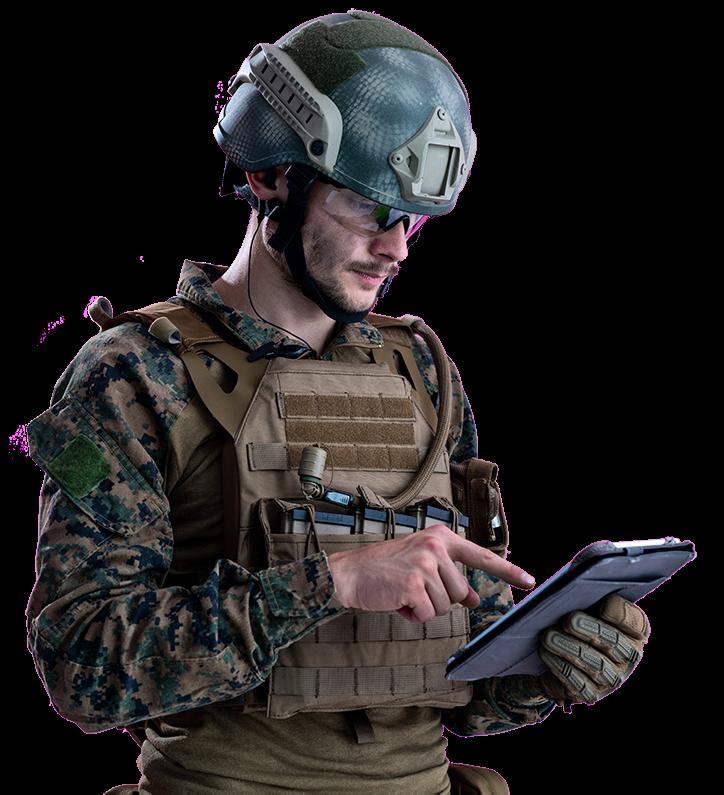

For editorial & monthly columns regarding transition, career advice, tips, workshops, transition to education, entrepreneurship, straight-forward legal tips for military and veteran business owners and more, visit Veterans In Transition. sandiegoveteransmagazine.com/category/veterans-in-transition




Earn Your Degree Anytime, Anywhere. Flexible, Affordable, and 100% Online!*
Military life comes with constant changes—deployments, PCS moves, and unpredictable schedules. But your education doesn’t have to wait. At Los Angeles Pacific University, we understand the unique challenges military members, spouses, veterans, and dependents face. That’s why our fully online programs offer the flexibility you need to study at your own pace, no matter where life takes you. Whether you’re on base, deployed overseas, or at home, your degree moves with you!
• 100% Online & Flexible: Learn from anywhere, on a schedule that fits your life.
• Maximize Your Benefits: Use GI Bill®, tuition assistance, and spousal benefits.
• Earn Credit for Your Experience: Take advantage of CLEP, DSST (DANTES), and AARTS/JST to turn your military training and knowledge into college credit.
• Fully Accredited: LAPU offers fully accredited associate, bachelor’s, and master’s degrees through the WASC Senior College and University Commission (WSCUC).
• Faith-Based & Supportive: Dedicated military-friendly success coaches who care about your journey.
Your Future Starts Today! Take the Next Step
*At this time, LAPU is unable to offer distance programs or courses to students residing in the following states and districts: Alabama, Arkansas, Connecticut, the District of Columbia, Indiana, Kansas, Maryland, Minnesota, New Mexico, New York, North Carolina, Oregon, Wisconsin, and Wyoming.





By Dr. George Ann Rice Patriots to Education
When veterans hang up their uniforms, or when military spouses finally settle in one place, their desire/their mission to serve doesn’t end—it can simply transform. Across the nation, thousands of miliary-related people (including military spouses, the National Guard and Reservists) are discovering that public education offers the perfect place to continue that calling. In classrooms, cafeterias, front offices, shops, school buses, IT, etc., they are finding purpose, community, and fulfillment that feel remarkably familiar.
For many who’ve live a life of service, education provides the opportunity to keep giving back—this time to the next generation. Veterans bring integrity, discipline, and teamwork to their roles, while military spouses contribute resilience and adaptability earned from years of navigating deployments and relocations. Together, they form a powerful force for stability and inspiration in schools and support locations.
In education, every effort has a visible result. Veterans and spouses can literaly see the diference they make in the classroom—whether it’s a student who finaly masters mulitiplication, a teen who finds direction, a classroom that learns the value of respect and perseverans, a busload of children who get to school safely, a school that is kept safe, heating and cooling system that function so children can learn, etc.
After years of uncertainty, education offers something deeply valuable: stability. A consistent schedule, community connections, and a clear path for growth all help veterans and spouses build long-term fulfillment. For many, a school becomes their new “unit,” a place where camaraderie, shared goals, and daily purpose thrive.

From teaching and counseling to administration and operations, the education field provides a wide range of roles and advancement opportunities. Professional development, mentoring programs, and leadership pathways allow veterans and spouses to keep growing while using their unique strengths to lift others.
Military life cultivates strengths every school relies on: leadership, problem-solving, accountability, and empathy. Veterans are accustomed to structure and team work, making them natural leaders in the classroom and beyond. Milary spouses, who often manage change and challenge with grace, bring exceptional organization and communication skills. These qualities elevate school culture and student success alike. These same skills plus skills learned to do military assignments are needed in administrative, school safety, social services, school nurse, OTs, PTs, bus drivers, operations, etc.
At its heart, education is service—an act of building, protecting, and empowering the future. For veterans and military spouses, it’s a mission that feels familiar yet profoundly new. Each lesson taught, bus route driven, or student supported becomes another way to serve the nation—one child at a time.
In America’s schools, veterans and military spouses are proving that their greastest contribution might not come from the battles they’ve fought—but from the lives they continue to shape.
To learn more, visit our website www.patriotstoeducation.org
Follow us on Instagram@patriotstoeducation




By Eve Nasby eve@infused.work


As we celebrate Veteran’s Day we are reminded as a nation to pause and thank you. Not only thank you but thank your family as well. Without this pause, the average American goes about their day taking for granted your service to this great nation. Veteran’s Day is for you.
You've marched long beneath the banners of duty. You've stood watch in darkness so others might sleep in peace. You've followed orders, endured separation, learned the discipline of body and spirit. Now, as you transition out, a different summons calls—not to arms, but to peace. It’s time to lay aside the uniform and take up another kind of service: living well in the world you defended.
Don't mistake this new mission as lesser. It's different, that's all. The battlefield of the soul is every bit as real as any field you've known. The courage that carried you through your darkest nights in the military must now face uncertainty, confusion, change.
In war and duty, identity gets handed to you: the name stitched on your chest, rank on your sleeve, the creed you live by. Noble things—but not the whole of you. When the rank is gone, when no one salutes, when your orders no longer echo through the halls—you remain.
What endures when the uniform comes off? Character. Integrity. The unseen strength that served you when no one was watching. The same discipline that kept you alive will keep you grounded now.

Don't mourn the loss of rank or title. You will have the opportunity to create a new path using the skills learned and the virtue forged by your military career. Your future employers will benefit from the crucible you have endured. Remember, the one who governs himself is mightier than the one who commands legions. This integrity, grit and commitment is often missing in average employees today.
We often focus on just the warrior in transition, but spouses also are to be recognized and heralded. You've shown a quiet kind of valor—unseen by parades, unpraised by medals. You carried the weight of absence, raised children in the shadow of uncertainty, became the steadfast center when everything else was chaos.
Now, as your warrior returns, the mission changes for you too. The home you kept alone must be shared again. There'll be friction—between the soldier who once led troops and the partner who led the home. Remember: neither role was small.
Meet this new season with patience, not fear. You can't command healing or rush understanding. Speak gently. Listen as one who has also endured war—because you have. You're returning home too. Veteran’s Day is for you as well. This is a a day for you too to be recognized and thanked for holding down the homefront as your beloved served the nation at large.
This may be an obvious word of encouragement, but let love lead, not pride. The devotion that carried you through deployments will carry you through this new campaign of adjustment and grace.
To the Warrior: The Mission Continues
You might think the mission has ended. It hasn't. The uniform changes, but the duty remains—to live with honor, to lead with humility, to serve without fanfare.
The world beyond the gate doesn't give clear orders. No daily briefings, no battle rhythms, no visible ranks. You'll find chaos in its own way. Yet the same principles that served you under arms will serve you here: wake with purpose, do the next right thing, treat others with the loyalty you gave your brothers and sisters in arms.
Some days you'll miss the simplicity of command, the closeness of the unit, the clarity of a mission. The civilian world may seem indifferent or unaware of what you've done.
Don't let that embitter you. Don't seek applause—seek meaning. Remember, you didn't serve for praise; don't live for it now.
What’s next? Build a new unit: your family, your community, your circle of influence. They need your leadership morethan you know.
To the Children: The Watchers of Courage
We’ve touched on the impact on families in the past, but they too are in transition when Mom or Dad finally come home. Children, you've been brave in ways you don't yet understand. You learned to say goodbye with a smile and count days until return. You've seen strength and sacrifice—both in your serving parent and in the one who stayed behind.
Now you'll see another kind of courage—the courage to begin again. Your family's life will change: new schools, new homes, new routines. But the same love that held you together across oceans will hold you together still.
Your parents' service was for freedom. Now you must use that freedom well—be kind, be responsible, serve others. That's how you honor their uniform. Veteran’s Day is for you too.
Final Reflection
The greatest victories aren't won with weapons, but with wisdom. The fiercest battles aren't fought abroad, but within—against bitterness, pride, fear, regret.
Be proud of all that you have accomplished. Leverage the experience you received while serving. Connect with organizations designed to help you with next steps and as you hear this Veteran’s Day, “Thank you for your service.”, know that what you did really mattered. Yes, there may be silent, still and uncharted days ahead- you will prevail again. Don’t curse the current, trust it. You are still on mission; the theater has changed. Hold fast to your virtues and to your integrity. Lead with compassion, serve with humility and when you doubt your worth remember this: the uniform may come off, but the soul of the warrior never does.
Happy Veteran’s Day, and Thank You for your service to this great nation and to my family.
Need help with your transition? Reach out to Eve via LinkedIn or email eve@infused.work www.linkedin.com/in/eve-nasby-given-hiring-expert

Finding a job in the civilian workplace may seem easy at first. After all, you have learned skills, practiced leadership and demonstrated initiative that will make you successful wherever you go.
The reality, though, is that it can be difficult. In fact, it can be downright depressing demotivating and you may feel totally disillusioned. We can help.
In our Veterans In Transition archives you will find helpful and informative articles about what’s next in transition, veterans in business, career, advice, tips, workshops, transition to education, entrepreneurship, veteran franchises, legal tips & resources for veteran businesses and much more...
For assistance in your journey please visit: SDVMagazine-Veterans-In-Transition sandiegoveteransmagazine.com/category/veterans-in-transition
By Paul Falcone PaulFalconeHR.com
What better way is there to celebrate Veterans Day than by acknowledging the service and sacrifices that our veterans have made not only during their military years but throughout their lives? The transition to the civilian sector after your military service has concluded is nothing to fear: it’s simply the next mission—a chance to apply your elite skills to a new domain.
Business
CEO surveys reveal that certain qualities and skills work best in today’s business environment: leadership, communication, teambuilding, accountability, agility and change readiness, innovation and creativity, and emotional intelligence all rank among the highest traits and qualities valued by U.S. CEOs. Your military training prepares you well to excel in these areas. You’re also well prepared to benefit from talent shortages in the private sector where hiring veterans makes good business sense.
First, talent scarcity plagues all industrialized nations, not just the United States. Baby Boomers—the generation that grew out of World War II—were at the time the largest generational cohort in U.S. history. Ten thousand babies per day were born in America between 1946 to 1964, totaling seventy-seven million people. However, no one paid much attention to this generation’s exit trends: from 2011 to 2029, ten thousand people transition into retirement every day, with the Baby Boom fully exiting the workforce in 2031 (for those working to age 67). Read that: the Baby Boom will fully exit the workforce in the next six years.
Next challenge: the Baby Boom was followed by the “Baby Bust,” or Gen X, which was only roughly half its size (around forty-four million). The introduction of the birth control pill in 1964 put a swift end to the Baby Boom. Further, young Boomers have been exiting the workforce in record numbers since the Covid pandemic subsided—many retiring early, opening their own businesses, or relocating overseas.


The talent scarcity that’s resulting as part of these huge demographic shifts makes hiring veterans all the more crucial for employers.
The AI revolution will surely mitigate and offset the talent scarcity facing many U.S. companies. And periods of high unemployment and corporate downsizing will “let some air out of the tires,” so to speak, alleviating the pressure to find qualified talent to do the work. Still, while the current job market as of this writing is looser than it’s been over the past few years (i.e., the hiring demand has cooled down), it’s a critical time to hone your leadership brand, technical know-how, and discipline to provide solutions to employers’ needs in light of these larger macro trends.
Explaining your military responsibilities to a private sector employer takes a bit of investment on your part. Don’t expect civilian managers to understand how your military work transfers directly to the workplace. There are a number of military-to-private-sector career dictionaries that help you translate your roles and responsibilities into civilian terms. Just remember that tweaks to your vocabulary and concrete examples will help you bridge the gap between your military and private sector experience. For example:
• Leadership/Command: Project management, team leadership, crisis management, strategic planning.
• Operations/Logistics: Supply chain management, process optimization, resource allocation, customer care.
• Training & Instruction: Corporate training, instructional design, mentorship.
• Soft Skills: Discipline, adaptability, integrity, performance under pressure.
Pay special attention to the last bullet on soft skills: now commonly referred to as “emotional intelligence,” soft skills include self-awareness (understanding your emotions), self-management (the ability to regulate and control your emotions), social awareness (being attuned to others’ emotions/demonstrating empathy), and relationship management (the ability to navigate social
interactions effectively and build and maintain positive relationships). CEOs see this as a critical priority, especially when remote work is involved (since they can’t directly oversee their employees’ work).
It’s reasonable to expect civilian interviewers to question your understanding of the challenges you’ll face transitioning into the private sector, especially if this will be your first role outside the military. Be prepared to structure your interview responses according to:
• Cultural Shift: the difference between the military's structured, hierarchical culture and the often less formal, consensus-driven private sector.
• Achievement Mindset: demonstrate how you focus on accomplishments and results using the STAR method (Situation, Task, Action, Result), rather than just discussing duties.
• Networking: Stress how much you value building a civilian professional network, especially via LinkedIn and your commitment to exploratory interviews.
• Identity Loss and Purpose: Acknowledge that leaving a life of service can cause a feeling of lost identity or purpose. Suggest finding purpose in the civilian world through company mission, volunteer work, or mentorship.
Understanding why qualified veterans are needed in the private sector, how to translate your abilities by focusing on CEO priorities, and being prepared to interview with purpose and self-awareness will help you launch a successful transition. Building your selfconfidence in the transition process will be the best Veterans Day gift you could give yourself and likewise give away to others in a spirit of selfless leadership.

You can connect with Paul on LinkedIn at www.linkedin.com/in/paulfalcone1
Paul Falcone (www.PaulFalconeHR.com) is a management trainer, executive coach, and bestselling author on hiring, performance management, and leadership development.

www.HarperCollinsLeadership.com

San Diego Veterans Magazine sat down with Chris Simpson, the Director of National University’s Center for Cybersecurity. Chris is a recognized leader in cyber defense education and cyber workforce development.
SDVM: During your time in the U.S. Navy, what were your main roles and responsibilities?
Chris: My most significant responsibility in the Navy was serving as an Air Intercept Control Instructor at TOPGUN, the Navy Fighter Weapons School. In this role, I taught the fleet's top controllers advanced tactics, techniques, and procedures for translating complex sensor data and engagement geometry into the splitsecond decisions that guide pilots through combat engagements. This role represented the pinnacle of my 20+ year Navy career, which began as a deck seaman and culminated in my retirement as a Lieutenant Commander.
The early part of my career focused on operational planning, data links, and air intercept control. After getting commissioned as a limited duty officer and completing a bachelor's degree in Computer and Information Science, I became interested in information assurance and transitioned to the Navy Information Professional community. After this transition, I held various assignments as Information Assurance Manager, Information Systems Security Manager, and C5I Officer for an Expeditionary Strike Group.
SDVM: How did you arm yourself with information and find the support you needed when transitioning from military service to civilian life — especially when it came to going back to school or figuring out where to turn for guidance?
Chris: My path was a bit different from many veterans. I finished my associate's degree while stationed at TOPGUN, earned my bachelor's degree in Computer and Information Science after my first tour as an officer, completed my master's degree in Information Security and Assurance from George Mason University during a shore duty tour, and I'm currently pursuing my doctorate at National University.
Balancing family life, work, and education was challenging but incredibly rewarding. Now, as an educator who works with students in similar situations, it helps me understand where they come from. I can design content that supports their learning and helps
them accomplish their goals. When planning my college career, I took advantage of Navy career counseling and education services. I highly recommend these resources to all service members.
SDVM: Did you experience any pitfalls coming out of the service?
Chris: I was fortunate to have a great transition from military to civilian life. My first post-Navy job was teaching knowledge management for the Navy, which provided good continuity. Moving into academia required some adjustment. While you do have compliance rules and regulations to follow, there's much more decision-making by committee. There's also greater flexibility through academic freedom, which allows you to approach problems and course design in ways that aren't always possible in a more structured military environment.
SDVM: What inspired you to pursue a career in cybersecurity education?
Chris: Throughout my Navy career, I spent years training and teaching, instructing elite air intercept controllers at TOPGUN and mentoring junior officers in tactical operations. When I discovered cybersecurity through Clifford Stoll's The Cuckoo's Egg and the NSA's Rainbow Series (particularly the Orange and Red Books), I recognized the same pattern-recognition and rapid decision-making skills I'd taught in air warfare: processing data streams, tracking multiple threats, identifying anomalies. Cybersecurity education became the natural intersection of my passion for teaching and this fascinating new field.
SDVM: Why did you choose to work for National University?
Chris: I've always enjoyed teaching and training, with various Navy assignments including TOPGUN. A couple of things brought me to National University. First is the awesome full-time and part-time faculty team. They're hardworking, dedicated people who are genuinely invested in helping students succeed. Additionally, I love working with working adults and helping veterans start new careers in the exciting field of cybersecurity. Seeing someone transition from military service into a thriving cybersecurity career is incredibly rewarding. The university's mission aligns perfectly with what I'm passionate about.

SDVM: Why are military veterans uniquely suited for careers in cybersecurity?
Chris: Veterans are uniquely suited for careers in cybersecurity. They're detail-oriented, a critical skill when the smallest mistake can allow an attacker into a system. They're equipped to handle intense, highstakes situations. Most military jobs involve operating complex equipment or information systems, and veterans have gained valuable leadership and project management skills.
Veterans typically have strong technical aptitude because they've worked with complex technology throughout their service. Whether they were operating vehicles, flying aircraft, maintaining equipment, or using sophisticated communication systems, they've gained hands-on experience that translates directly to cybersecurity. Even if they don't come from what the military classified as a technical specialty, those foundational skills transfer incredibly well.
SDVM: What advice would you give to transitioning veterans who are looking to pursue education or translate their military skills into cyber careers?
Chris: Education is a journey. As you begin your cybersecurity education, relate hands-on and apply learning to theoretical knowledge. Many of the applied tools and equipment will change, but the fundamentals will not change.
Remember that education is more than just completing assignments. It's about gaining a deep understanding of specific subjects and topics in your field. In today's fast-paced world, many forget the importance of deep reading.
Finally, one of the best things about going to a university is the great faculty you get to work with. They're a great resource for learning and career advice. Take advantage of your time in university to build hose relationships and learn from their expertise.

Chris Simpson, Director of National University’s Center for Cybersecurity. For more information on National University and cybersecurity, vist www.nu.edu

Finding a job in the civilian workplace may seem easy at first. After all, you have learned skills, practiced leadership and demonstrated initiative that will make you successful wherever you go.
The reality, though, is that it can be difficult. In fact, it can be downright depressing demotivating and you may feel totally disillusioned. We can help.
In our Veterans In Transition archives you will find helpful and informative articles about what’s next in transition, veterans in business, career, advice, tips, workshops, transition to education, entrepreneurship, veteran franchises, legal tips & resources for veteran businesses and much more...
For assistance in your journey please visit: SDVMagazine-Veterans-In-Transition sandiegoveteransmagazine.com/category/whats-next-transition




By Maurice D. Wilson, MCPO USN (Ret), President/Executive Director, NVTSI.org
A recent study by the National Veterans Transition Services, Inc. (NVTSI) reveals a sobering truth about why so many transitioning service members leave San Diego — and why California is quietly losing some of its best veteran talent. Despite our reputation as one of the nation’s most militaryfriendly regions, San Diego’s transition system remains fragmented, reactive, and disconnected from the longterm success of those who served.


Diego’s
Each year, more than 19,000 service members transition out of the military in San Diego County — the largest annual concentration in the nation. About 63 percent choose to stay, hoping to build their civilian lives here. Yet many quickly discover that staying comes with barriers. The rest — nearly 7,000 highly trained veterans every year — move to other states offering more affordable living, clearer career pathways, and the chance to buy a home.
The paradox is striking. San Diego hosts a powerful $66 billion aerospace and defense industry and a 1.8-million-person regional job market, yet thousands of veterans can’t find meaningful roles within it. As of mid-2025, the veteran unemployment rate is 5.6 percent, far higher than the national veteran average (3.1 percent) and the local non-veteran rate (3.1 percent). Another 33 percent are underemployed, and among younger veterans ages 18–34, unemployment climbs to 8.9 percent — the highest of any group.
Despite this deep talent pool, San Diego ranks only #58 nationally in veteran employment — a stunning statistic for a city built on military strength and service.
San Diego takes pride in its “veteran city” identity, supported by over 450 organizations serving military members, veterans, and their families — our socalled Sea of Goodwill. Yet size is not the solution — integration and coordination are.
Too often, programs operate in isolation, duplicating services rather than connecting them. Veterans encounter a maze of disconnected assistance — job training in one place, counseling in another, career help somewhere else — without a cohesive path from separation to stability. Meanwhile, sky-high housing costs, stagnant wages, and limited access to purpose-driven careers drive many to leave. States such as Texas, Florida, and Arizona offer more affordable housing, stronger veteran pipelines, and communities that translate military experience into opportunity.
This ongoing migration costs San Diego dearly. Each year the region loses nearly $1 billion in economic output from departing veterans — not to mention the moral and civic cost of watching those who served our nation feel unwelcome or undervalued in the very community they defended. Every veteran who leaves takes with them leadership, innovation, and mission-driven discipline, assets our economy can’t afford to lose.
The problem is not with the veterans — it’s with the system. The military’s force-first model prioritizes readiness over long-term career planning. Transition programs like TAP begin too late, focus on checklists instead of purpose, and seldom connect service members to regional employers.
Compounding that, 86 percent of transitioning service members are career changers who require upskilling or reskilling to compete in the civilian market — yet 80 percent admit they’re uncertain about what they want to do next. Add those realities to late-stage preparation, minimal employer engagement, and a lack of regional coordination, and you have a recipe for failure that repeats itself every year.
San Diego’s challenge is not a shortage of goodwill or resources — it’s a shortage of alignment, accountability, and shared vision. Without connecting education, workforce development, housing, and community reintegration into a unified framework, we cannot turn effort into outcomes.
The good news is that San Diego already possesses everything it needs to succeed — abundant talent, committed organizations, strong employers, and a proud legacy of service. What’s needed now is integration.
We must build a regional reintegration ecosystem that links every stage of transition — from activeduty preparation to civilian employment and longterm retention. That means aligning government, education, business, and community partners around shared metrics and mutual accountability.
Veteran-serving organizations should collaborate rather than compete, forming networks that move service members seamlessly through transition. Employers must engage earlier to design training and apprenticeship programs that convert military skills into civilian careers — especially in defense, technology, healthcare, logistics, and public safety. Civic leaders must treat veteran retention not just as a moral obligation, but as an economic strategy essential to regional prosperity.
When veterans find careers that align with their skills and purpose, they stay longer, perform better, and strengthen their communities. To make that possible, San Diego must evolve from a city of goodwill to a city of coordinated action.
If San Diego truly wants to be “America’s Finest City,” it must lead with unity and purpose. The Sea of Goodwill that defines our region is an incredible strength — but only if it becomes a coordinated current, not scattered waves.
The path forward is clear: connect the 450-plus organizations, educational institutions, chambers, and employers already serving veterans into one synchronized network that shares data, measures impact, and ensures no veteran falls through the cracks.
This is not about creating new programs; it’s about aligning the ones we have — and holding ourselves accountable for results.
Veterans have already completed their mission. Now it’s our turn to complete ours — by making San Diego not just the best place to serve, but the best place to live, work, and thrive after service.

National Veterans Transition Services, Inc. (NVTSI) is a San Diego-based nonprofit dedicated to helping service members, veterans, and spouses successfully transition from military to civilian life. Through innovative programs like REBOOT Workshops™, Shorebased Transition Assistance & Reintegration Readiness (STARR) Program, and the Veteran Match Career DNA platform, NVTSI is transforming how America integrates its veterans into the workforce.
Learn more at www.nvtsi.org.
By Barbara Eldridge www.mindmasters.com

Our column last month was a full-on wake-up call to get your financial records in order before tax time—and to understand exactly where you stand from a profit-andloss perspective. Hopefully, you’ve taken some time to review, organize, and catch up.
Now is also the time to assess other key aspects of both your business and yourself. A strategic analysis helps you understand where your business stands in today’s market, but it’s equally important to evaluate your personal strengths and weaknesses
Self-reflection is foundational to building an effective plan for your business. Ask yourself: Have you grown or strengthened certain areas, or slipped back into old habits? Are your actions aligned with your core values? Your values shape your behaviors—living in integrity with them determines how you lead and make decisions.
A few years ago, I interviewed one of my clients on a Blog Talk Radio show who emphasized that as a business owner, you are an investor—someone who builds wealth and creates lasting value.
Does that mindset fuel your motivation to reach your goals? Does it sustain you through challenges? When you think about it, there’s virtually no area of life or business untouched by money. Expanding your understanding of money means exploring how it influences every decision, every transaction, and every opportunity. Remember: consistent investment and perseverance pay off. Small, steady investments of time and money lead to long-term success.
Knowing this, I hope you’re inspired to end the year with a bang. The 11th hour is your chance to gear up— to double down, give your best effort, and finish strong. November and December don’t just close out the year; they set the stage for a powerful start to 2026.
Taking time to assess where you are helps you recommit to excellence this quarter. Spend a few moments each day visualizing success—feeling the thrill of victory that comes from knowing you gave it your all.

Most people see the 11th hour as the beginning of the end. But for you, it can be the beginning of a new beginning. The key isn’t how much you spend—it’s how intentionally and consistently you reinvest in your business.
Before you can shift your approach, start by reviewing your current financial reality:
1. What are your core beliefs and mindset about money?
2. What new avenues exist to increase your revenue?
3. How can you better track and manage your sales?
4. Where can you reduce costs or unnecessary spending?
5. Are you managing credit and debt to support smart decision-making?
6. Have you established clear savings and investment goals for the future?
The 11th hour is not the end—it’s the spark of what’s next.
As William James said:
“The greatest revolution in our generation is the discovery that human beings, by changing the inner attitudes of their minds, can change the outer aspects of their lives.”

Barbara Eldridge President/ Founder of Mind Masters where business owners tap the synergy of energy, commitment and excitement for each other to raise the bar for each other’s goals, brainstorm ideas, create solutions, and offer mutual support. Checkout how a Group help you create personal, professional and financial growth. www.mindmasters.com

www.dreammakerfranchise.com/veterans-franchising-opportunity
Celebrating “Vetrepreneurs” during National Veterans Small Business Week Like many Veterans. Maurice Wilson knows what it means to serve—and to struggle. A Navy Veteran and former Master Chief Petty Officer, Wilson spent more than two decades in uniform before retiring from service. For Wilson, the move was challenging, as it is for many of the roughly 200,000 Servicemembers who transition out of service every year. “I knew what it meant to be in my uniform as a Master Chief,” he said. “But that didn’t mean the same thing in the civilian world. I had to ask myself, ‘Who am I now?’”
That identity crisis led to a new mission.
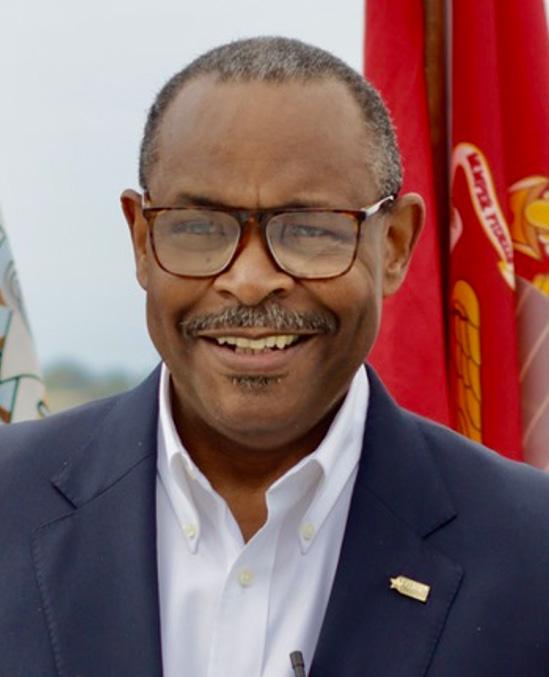
Veterans supporting Veterans
In 2010—after a decade-long search for a new purpose—he found it in response to rising unemployment, homelessness and suicide rates among Veterans. His answer: National Veterans Transition Services, Inc., a nonprofit designed to help Veterans redefine themselves and their purpose after military service. www.nvtsi.org
It does that through nationally recognized REBOOT Workshops™, a behaviorbased transition program for Servicemembers, Veterans, and spouses—the only program of its kind in the country. The company also recently launched Operation Vetrepreneur, an initiative to uplift Veteran-owned businesses across Southern California via entrepreneurship training.
“I knew I wanted to make a difference in people’s lives,” Wilson says, noting that thousands of Veterans have graduated from the program since its founding. “I wanted to get things done and figure out how to really move our community forward.”
Wilson is one of countless Veterans who find a path to purpose via entrepreneurship.
Indeed, Veterans are statistically more likely to own their own businesses than civilians, according to the U.S. Small Business Administration. The nation’s 1.6 million Veteran-owned businesses employ more than 3 million people and generate nearly $1 trillion in sales, making them a vital part of the US economy.

Many, like Wilson, devote their efforts to supporting fellow Veterans and military families. Shannon Daniel, for example, developed a cold plunge and sauna business to support health and wellness in Southern California, home to a large population of Veterans. A Navy Special Operations Veteran, Daniel struggled to find a civilian role that offered meaning and purpose while also enabling him to manage his own service-related chronic pain.
He found support through The Honor Foundation, a nonprofit that helps elite Veterans transition into civilian life. That support led him to cold water therapy, a practice he once avoided but now swears by. “I felt like I was 18 again,” he says, recalling his first cold plunge experience. Many others also find it invigorating; cold water therapy is linked to reduced inflammation and soreness and may positively affect balance, mood and more.
The experience led Daniel to launch Tribe Cold Plunge in San Diego, home to a large military population. A year and a half later, the business—which offers heated sauna sessions, compression therapy and cold water baths—is thriving. www.navyfederal.org/makingcents/blog/special-forces-veteran-healing.html#offSite
“Veteran-owned businesses are more than economic engines—they’re reflections of service, leadership, and community that often fill vital gaps in services needed in the military community,” said Will Scott, Vice President of Business Solutions at Navy Federal Credit Union, which serves the military community. “These businesses are solving problems, creating jobs, and supporting Veterans and military families—a cause we champion this week, National Veterans Small Business Week, and every week.”
www.sba.gov/national-veterans-small-business-week
Indeed, key to successful Veteran-owned businesses are trusted financial partnerships.
Despite their entrepreneurial edge, many Vetrepreneurs face hurdles when it comes to financing. Limited credit histories and lack of collateral can make it harder to secure traditional loans.
Financial institutions that serve the military community can help business owners overcome these challenges. Navy Federal offers business membership options, access to small business professionals, and competitive products tailored to Veteran business owners. Navy Federal also connects Veteran business owners to tools and resources provided by organizations, like SCORE and the Rosie Network, which provide free coaching, workshops, and networking opportunities.
“Veteran entrepreneurs already bring the mindset and mission focus,” said Larry Perino an Army Veteran and Assistant Vice President of Business Solutions at Navy Federal. “Our role is to help amplify that—whether it’s

through financing, guidance, or simply understanding where they’re coming from. It’s a force multiplier effect. When we support one Veteran-owned business, we’re often supporting a whole network of Veterans behind it."
That support is critical, according to US Marine Corps Veteran Jason Williamson.
Last year, he launched a Next Day Access franchise in North Carolina, which provides home modifications for disabled and aging people, including Veterans. From wheelchair ramps to bathroom safety upgrades, his business helps Veterans and others stay in their homes and “age in place” with dignity and comfort. His business is a direct response to his own experience with servicerelated pain—and a way to ensure others don’t face it alone.
Williamson credits his financial partner—Navy Federal—with helping him find clarity and confidence during his entrepreneurship journey. “They treated me like family,” he said.
Learn how Veterans can start businesses, products and services for business owners at: www.navyfederal.com

Transitioning
In our Veterans In Transition archives you will find helpful and informative articles about what’s next in transition, veterans in business, career, advice, tips, workshops, transition to education, entrepreneurship, veteran franchises, legal tips & resources for veteran businesses and more...
For assistance in your journey please visit:
SDVMagazine-Veterans-In-Transition sandiegoveteransmagazine.com/category/veterans-in-transition
By Joseph Molina veteransccsd@gmail.com
One powerful tool for accelerating business growth is connecting with a Local Veteran-Owned Business Networking Group These are Veteran-Focused groups that are uniquely positioned to help Veteran-owned businesses access resources, increase connections and improve sales.
Here are the key benefits of engaging with a Local “Veteran-Owned Business Networking Groups” especially during the early stages of your business or if you transitioned out of the military recently.
1. Shared Experience & Peer Understanding Veteran-run networking groups provide a community where members share a common background: discipline, service, and the challenge of translating military skills into business success. This shared context fosters trust, mentorship, and relevant advice. When someone has “walked the walk,” advice about dealing with leadership transitions, mission planning, or operational efficiency resonates more deeply than generic entrepreneurship tips.
2. Access to Veteran-Specific Resources & Training
Many Veteran-focused groups offer specialized programming—workshops, seminars, or webinars— designed to address issues unique to Veteran entrepreneurs and help with navigating government contracting (VA, SBA, NVCC), to access military-specific procurement opportunities or Business funding.
Translating military credentials into small business credentials or even shifting from mission-driven structure to market-driven business. These groups often partner with government and private organizations such as, Veteran affairs offices, local municipalities, or nonprofit foundations providing resources to help you expand your business.
3. Greater Credibility & Brand Distinction
Being part of a Veteran-business networking group helps validate a business in the eyes of clients and partners who value “Veteran-owned” status.
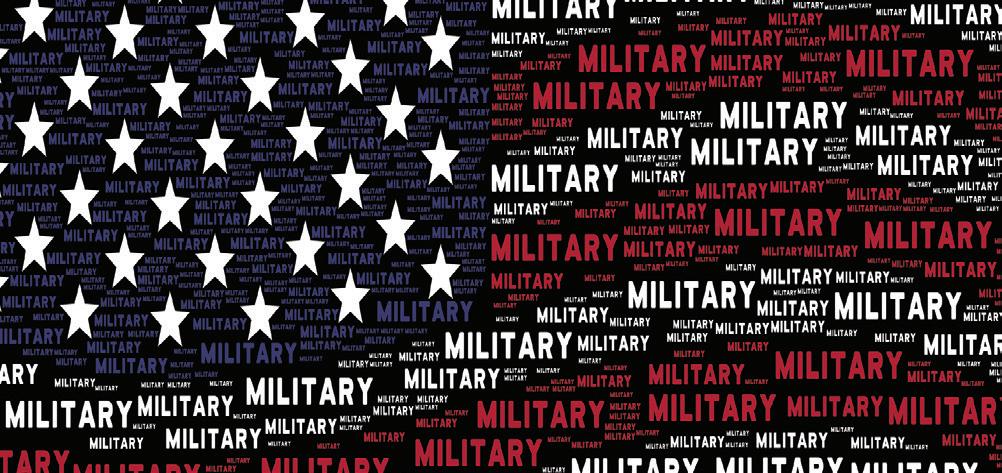

Networking in these groups can open doors, expand connections, increase access to resources building credibility with suppliers, or attracting customers who prioritize buying from Veterans.
4. Referrals, Partnerships & Sales Opportunities
Local Veteran-owned business networking groups bring together Veteran entrepreneurs from different industries. These connections translate into referrals, joint ventures, and practical partnerships.
For example, a Veteran business in logistics may connect with another in security or tech, enabling cross-referral or bundling services. Also, members often share bid notices, lead sites, RFPs, or subcontracting opportunities. These direct connections can lead to immediate sales or contract wins.
Transitioning from the structured, mission-oriented environment of the military to the ambiguity of business ownership can feel isolating. Veteran networking groups also work as support groups: peers processing similar challenges, managing uncertainty, defining new purpose. This emotional backbone helps retain motivation and resilience—qualities that translate to sustained effort in business.
Conclusion
For Veterans embarking on entrepreneurship after military service, Local Veteran-Owned Business Networking Groups are like social clubs with a Business twist serving as business accelerators.
With their unique understanding, specialized resources, credibility, referrals, and mutual support, these groups help Veteran entrepreneurs build deeper connections and increase sales more rapidly. Being intentional about joining and contributing to such networks can make a world of difference creating a positive impact for a strong, sustainable growth.
If you’re a Veteran-Owned Business, exploring “Veteran-Owned Business Networking Groups” can be of great benefit for your business. Here is the link to find a local Veteran-Owned Business Networking Group
leadership.my.canva.site/veteran-owned-business-groups
Franchise Wealth Consultants is dedicated to helping you achieve your entrepreneurial dreams and secure your financial future through business ownership.
Our Ideal Franchise Candidates Include:
• Aspiring entrepreneurs eager to control their future.
• Professionals aiming to transition from the corporate world.
• Investors seeking semi-absentee or passive income opportunities.
• Experienced operators looking to expand their portfolios.
• Veterans, public service professionals nearing retirement, and former corporate management professionals represent the largest segment of our franchisee base.
• Franchising offers a proven business model and brand recognition
• FWC helps you successfully navigate the world of franchising, which can be overwhelming if you are not familiar with the process.
• We have access to the largest inventory of top-performing franchises through the IFPG network, the largest franchise network available.
Our Consultations
Why is it free? Our consultation comes at no cost to you because we’re compensated by the franchise companies—not by our clients. This means you get unbiased guidance and support, with your best interests as our top priority. So, there is not only no fee, but no obligation on your part.
• Always personalized recommendations and expert guidance
• We’ll help you find the perfect franchise that aligns with your lifestyle, personality, goals, and budget - at no cost to you
• Clear, honest answers to your questions
• Need to explore financing options for your franchise? We can connect you with trusted partners.
We’re more than just consultants. We are your strategic partner.

Franchise Wealth Consultants, Ltd.



Straight-forward legal tips for Military and Veteran
Business Owners
By Kelly Bagla, Esq. www.BaglaLaw.com


Your employee handbook can be the foundation of employee performance and a shield against lawsuits, or it can be a ticking time bomb that confuses employees and strips away your legal defences. A well-written employee handbook can make the difference between these two outcomes.
Here are ten common mistakes you should avoid:
1. Adopting a “Boilerplate” Handbook
Avoid using a cookie-cutter template. It can be helpful to review a template or the handbooks of similar companies when drafting your own. But, in the end, your company is unique, and your handbook should be specifically tailored to your organization’s policies and actual practices.
2. Not including All Policies in the Handbook
Employers often draft new policies as laws change and new situations arise in the workplace. Include all important new policies in the employee handbook. Employees should not have to review the bulletin board in the break room, and other miscellaneous policy announcements in addition to the employee handbook to learn the company’s policies.
3. Omitting Disclaimers
All employee handbooks must include a disclaimer that nothing in the handbook creates a contract for employment or alters the employee’s at-will employment relationship. Remove any 90-day probationary period language if your employees are at will. Also include a disclaimer that the handbook cannot address every possible situation that could arise in the workplace.
4. Not Having an Effective Anti-Harassment Policy
The employee handbook should let employees know what harassment is and what they must do about it if it happens to them in the workplace. The handbook should describe the procedure employees need to follow to report an incident of harassment, including

the specific person to whom an employee should report the harassment, and an alternate person if the person designated under the policy, is the alleged harasser. The handbook also may include a form for employees to report workplace harassment, although employers must promptly investigate any complaint, even if the employee does not submit it in writing.
A blanket prohibition against employee speech that could reflect negatively on the company may violate the employee’s rights under Section 7 of the National Labor Relations Act. In addition, employees have the right to discuss wages and other work issues with fellow employees without reprisal. But the handbook may clearly state what is not allowed, including slanderous, discriminatory or harassing posts. The handbook should prohibit the disclosure of proprietary or confidential company information as well. You may also suggest that employees make it clear when a post is their opinion and not necessarily a stance of the company.
Employee handbook policies should list the type of conduct that may result in employee discipline, up to and including termination of employment. However, you should not delineate a rigid step-by-step disciplinary system from which the company cannot deviate. Disciplinary policies should always include the disclaimer that the company reserves the right to skip one or more steps as necessary depending on the severity of the infraction.
Enforce the policies in your handbook the same way with everyone, every time. Inconsistent enforcement can have a negative effect on company morale. Even worse, it can subject the company to claims of discrimination if the company disciplines employees differently for the same infraction.
Make sure managers and supervisors receive regular training on employee handbook policies so that they are implemented correctly and effectively. Once trained, management and supervisors should periodically review the employee handbook policies to assess whether they are being applied consistently throughout the company.
Keep your employee handbook concise, avoid legalese, and make sentences clear and direct to eliminate potential ambiguity. You cannot include every possible situation that may arise, and you should avoid going into extensive detail on every management policy.
Laws and regulations can change, so have your employment legal counsel review the employee handbook on a periodic basis to keep it up to date. Be sure to alert employees to any updates and have them sign an acknowledgement that they received an updated copy of the employee handbook.
There is a lot to consider when planning and implementing an employee handbook. When you do it the right way, it will be a valuable tool for everyone at your company for years to come.
If you need help determining if your employee handbook meets the latest legal standards, we can help. Please visit my website at www.BaglaLaw.com

Disclaimer: This information is made available by Bagla Law Firm, APC for educational purposes only as well as to give you general information and a general understanding of the law, and not to provide specific legal advice. This information should not be used as a substitute for competent legal advice from a licensed professional attorney in your state.

Boot camp prepared you for the military. We prepare you for college.
Just like boot camp molded you into the service member you would become, our free on-site and virtual programs mold you into the college student you strive to be.


Scan the code to learn how our programs help enlisted veterans succeed in college









By Hadley Wood www.hlinwood-insurance.com

“It takes 20 years to build a reputation and a few minutes of cyber-incident to ruin it.”
-
Stephane Nappo - Global Head Information Security or Société Générale (International Banking pole)
Cyber threats are real and everywhere. The government knows this, big business knows this, and any medical, civic institution and bank knows this. But did you know that 25% of cyber attacks are on small business owners?
Cyber-attacks are on the rise and most General Liability insurance policies offer limited, if any, cyber protection. Cyber insurance can protect the business from liability stemming from a breach of data that is controlled by the business owner. In simple terms, Cyber Coverage protects your business in case someone hacks into your data and uses that data to connect with your contacts, blackmail your contacts (or you), hijacks your bank accounts, creates harmful statements about your company and/or your clients, vendors, contacts and associates.


The Cyber Claims by % of incident, are currently:

If you have a business that creates, processes, stores or controls critical data, you will want to look into having Cyber coverage. It can be purchased as a stand-alone policy and the rates will be determined by the over all risk. If you see that Cyber coverage is included in your policy, make sure to ask your Broker about exclusions, coverage limits, monitoring tools and any deductibles that may apply.
Cyber threats are real and everywhere.
A stand-alone (separate from your General Liability) Cyber Liability coverage policy should cover first and third-party damages. Meaning, it should cover your company and also any clients, vendors, subcontractors, etc., for damages the cyber-attack/data breach causes. Cyber coverage typically comes with access to IT experts, forensic specialists, proactive tools to consistently manage cyber risk, backend dark web monitoring services and more. Damages should include restoring lost data, business interruption costs, cost of notifying damaged parties, reputational repair, and more.
The dynamic world of cyber coverage changes every minute and is constantly evolving to meet the needs of the risk and to stay one step ahead of the evasive cyber criminals.
For more information about this or to speak with an experienced Cyber Liability insurance broker, please contact 760-828-0403 or visit www.hlinwood-insurance.com

Every Thanksgiving morning, as most of San Diego prepares to carve turkeys and gather with loved ones, a different kind of community meal is being prepared in Balboa Park. Thousands of people including veterans, families, first responders, and neighbors come together not around a table, but at a starting line.
Their mission is simple, yet profound: to feed hope.
The Father Joe’s Villages Thanksgiving Day 5K Run for Hope has grown into one of San Diego’s most meaningful traditions. It’s not about competition or finish times, it’s about compassion in motion. Every step or stroll taken on Thanksgiving morning helps fill plates across the city, providing hundreds of thousands of warm, nutritious meals for individuals and families who might otherwise go hungry. In 2024, proceeds from the event helped serve nearly 700,000 meals through Father Joe’s Villages’ comprehensive Food Services Program. Those meals represent far more than sustenance. They represent stability, dignity, and a reminder that no one is forgotten, especially those who once wore our nation’s uniform.
For many San Diegans who have fallen on hard times, Father Joe’s Villages is where the path to recovery begins—with a meal shared in kindness.
"Food is often the first bridge,” explains Deacon Jim Vargas, President and CEO. “Someone comes in hungry, but what they find is much more. They find community. They find care. That meal might be the first step toward housing, healthcare, or employment. It’s where transformation begins.”
This year alone, Father Joe’s Villages has provided more than 418,000 meals through its dining program, public lunch line, and neighborhood pantry. Among those served are veterans—men and women who once served our country and now face the challenge of rebuilding their lives after homelessness or hardship.
So far this year, the organization has supported 709 veterans, offering a range of programs including shelter, housing, healthcare, and employment assistance. Of those, 70 veterans are in permanent supportive or rapid rehousing programs, 40 reside in shelters, and eight have recently moved into permanent homes.
The Run for Hope helps power Father Joe’s Villages’ meal programs, ensuring that three meals a day, 365 days a year, are available for neighbors experiencing homelessness or food insecurity.
Every registration, every donation, every volunteer hour helps sustain the organization’s commitment to feeding both body and spirit.
Participants in the 5K often describe the morning as “the best way to start Thanksgiving.” Families arrive bundled in sweatshirts, friends reunite at the finish line, and veterans walk side by side with the community they once protected. Some push strollers, others run with their dogs or walk alongside teammates in costume—but all move forward together, step by step, toward the same goal: ensuring that everyone in San Diego has access to food and hope.
The event’s inclusive spirit reflects the very heart of Father Joe’s Village's mission. Whether you run for fitness, walk for fun, or roll in support, every mile makes a tangible difference for those in need.



For veterans in particular, Father Joe’s Villages offers more than emergency aid. It provides a pathway home. Beyond meals and shelter, veterans receive access to mental health counseling, substance use treatment, medical care, and job training—services that empower them to regain stability and independence.
Homelessness among veterans remains a national concern, but in San Diego, organizations like Father Joe’s Villages are changing that narrative. By addressing the root causes such as trauma, health challenges, and lack of affordable housing, Father Joe’s Villages’ integrated model gives veterans the tools to rebuild their lives with dignity.
Deacon Vargas puts it simply: “No one who served this country should ever have to face homelessness or hunger. When our community shows up, whether by running, donating, or volunteering, we are showing those who served that we still have their back.”
As Father Joe’s Villages celebrates 75 years of service this year, the Thanksgiving Day 5K continues to embody what the organization has always stood for: compassion in action.
For participants, the Run for Hope has become more than a holiday tradition—it’s a reflection of what Thanksgiving truly means. It’s about giving thanks by



giving back, and honoring the people who have given so much to this community.
This month, lace up your shoes—or simply lend your support—and be part of a movement that turns gratitude into impact. Together, we can ensure that San Diego’s veterans and neighbors in need have what we all deserve: a place at the table.

The 24th Annual Thanksgiving Day 5K will take place on Thursday, November 27, 2025, in Balboa Park. Participants can join in person or virtually from anywhere in the world. Register at www.thanksgivingrun.org and all militaryaffiliated participants can use code MILITARY25 for $5 off their registration. For sponsorships, vendor booths, or corporate team opportunities, contact 619-446-2115 or emily.davis@neighbor.org
Run with purpose. Feed with compassion. Honor those who served.

By Katie Lange DOD Historical Collection www.defense.gov
Thanksgiving is a hallowed American tradition filled with family, food, football and fun, but did you know we can attribute its creation largely to the military?
While conventional wisdom dates the first Thanksgiving back to 1621, when pilgrims in Plymouth, Massachusetts, joined in with local Native Americans to celebrate the fall harvest, it wasn’t a celebration that continued from year to year.
In fact, Thanksgiving didn’t really become any kind of tradition until we were trying to unify the nation during two of our biggest early struggles – the Revolutionary War and the Civil War.
During the revolution, the Continental Congress decided to declare several days of thanksgiving to help inspire our troops to victory. The first such day fell on Nov. 1, 1777, when news of some victories against the British reached their ears.
Gen. George Washington also called for a day of thanksgiving on Dec. 18,1777, as a victory celebration for the colonial army’s win during the Battle of Saratoga that October. He later issued the first
formal Thanksgiving Day proclamation for the U.S. when he was president, setting the date for Nov. 26, 1789.
While that date fell around that of our current-day holiday, Thanksgiving still failed to become an annual tradition until about 75 years later – when President Abraham Lincoln decided to renew the celebration in 1863, during the height of the Civil War.
Even as war raged across the country, Lincoln called for a day of thanks to be held on the last Thursday in November. The day would be known as Thanksgiving – and the tradition finally became official.
For many years, the presidents who came after Lincoln kept Thanksgiving on that final Thursday of the month. But during World War II, there were two years in a row in which November had five Thursdays, confusing a lot of people and causing a lot of arguments about which date Thanksgiving would fall on.
In 1942, Congress passed a resolution to clarify that every fourth Thursday of November would be Thanksgiving Day.

No matter where you’re celebrating Thanksgiving this year, know that the tradition grew out of your predecessors’ efforts to bring unity to the United States.
We can all be thankful for that!





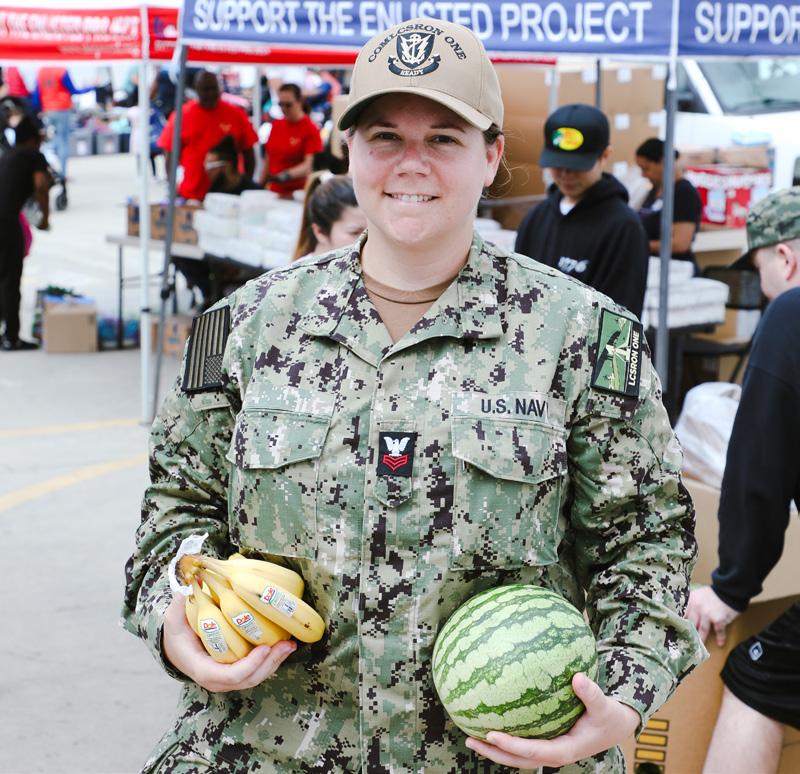





As the year draws to a close, Warrior Foundation Freedom Station once again stands at the forefront of honoring our nation’s ill and injured service members through a series of powerful year-end initiatives. From reuniting Warriors with their families for the holidays to forging strong community partnerships, every effort reflects our foundation’s unwavering mission—to assist, honor, and support the men and women who have so bravely served our country.
Each November, our nation unites in gratitude to honor the brave men and women who have worn the uniform of the United States Military. At Warrior Foundation Freedom Station, Veterans Day holds special meaning—it represents not only remembrance, but action. Through year-round programs that restore independence and dignity, we strive to ensure that our Warriors know their sacrifices are never forgotten. Veterans Day marks the beginning of a season where gratitude turns into giving, compassion becomes community, and service continues in powerful ways.

For many service members recovering from serious injuries or illnesses, the holidays can be an especially difficult time. Each year, we provide flights for Warriors, ensuring they are reunited with their families during the holiday season.
This tradition has grown into one of our most cherished programs, embodying the true spirit of the season. The emotional reunions are filled with laughter, tears, and gratitude—moments that allow Warriors to return with full hearts, ready to focus on recovery and healing.
For those who are unable to travel home, Warrior Foundation flies their loved ones to the Warrior instead. It’s a powerful reminder that behind every uniform is a person whose courage and sacrifice deserve both recognition and rest.
Following the flights home, the holiday spirit continues as Warrior Foundation Freedom Station distributes gifts to our ill and injured Warriors. The annual Holiday Gift Handout Day brings cheer to the Warriors, staff, volunteers, and supporters who come together to share in giving overstuffed duffel bags filled with gifts, essentials, and heartfelt messages of appreciation.



In an inspiring show of community support, SeaWorld San Diego has partnered with Warrior Foundation Freedom Station through its monthly Military Appreciation Days to honor our nation’s Warriors. As part of this partnership, Warriors are treated to an exclusive Dolphin Encounter—a day filled with adventure, appreciation, and meaningful connection. These up-close animal experiences highlight the extraordinary connection between humans and animals—one that often brings hope, joy, healing, and a renewed sense of purpose. SeaWorld’s Animal Rescue mission of giving animals a second chance at life beautifully parallels our own mission of helping Warriors create new chapters in their lives. This collaboration exemplifies how community partnerships can foster truly meaningful and joyful experiences for those who have sacrificed so much.
Together, these events represent more than just a calendar of activities, they embody the very heartbeat of Warrior Foundation Freedom Station. Each flight home, each gift delivered, each partnership forged contributes to a greater purpose: restoring independence, dignity, and hope for America’s Warriors.
As we celebrate the close of another remarkable year, Warrior Foundation extends heartfelt thanks to its supporters, volunteers, and community partners. Your generosity and compassion continue to prove that the true strength of our nation lies not only in those who serve—but also in those who stand beside them.

“When we fly a Warrior home, hand them a gift, or give them a safe place to heal—we remind them that they are never alone. That’s what the holiday season
Andrew
Gasper, CEO, Warrior Foundation
The essence of Warrior Foundation Freedom Station is this: we are not just homes, but hope. Not just support, , and most importantly, not just words, action. Visit WarriorFoundation.org for more information, to donate, or to get involved.


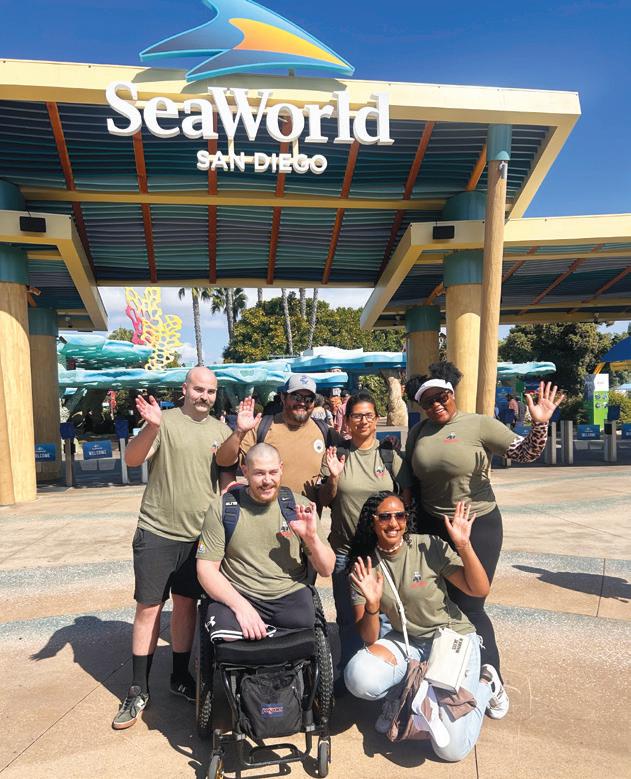

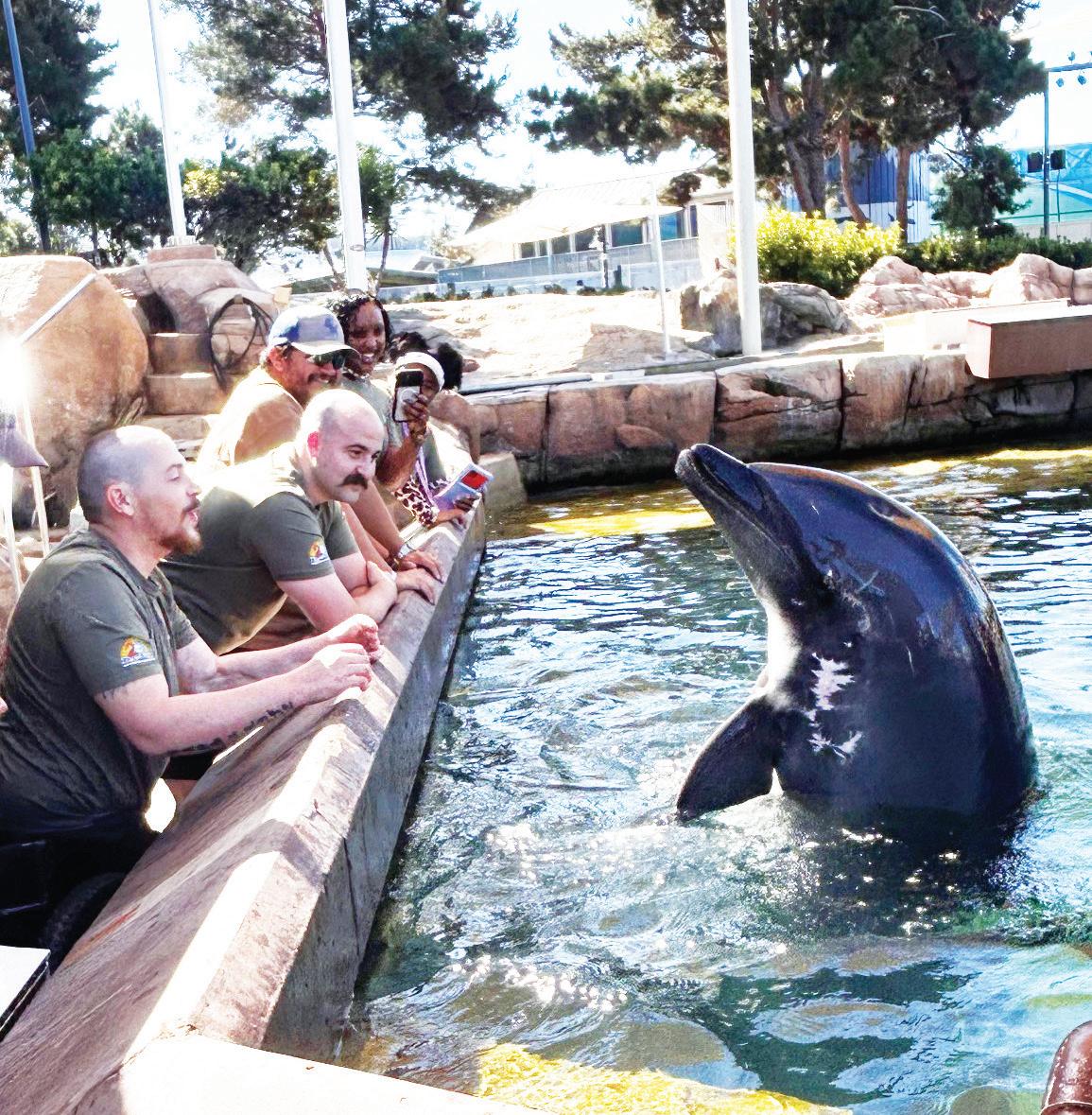




In 2021 , a dedicated group of community leaders sought to acknowledge and celebrate veteran-owned businesses in the San Diego East County Communities. This initiative led to the creation of VECA in collaboration with the East County Chamber of Commerce. What began with just 25 participants has now expanded beyond all expectations. We have monthly (free) luncheons and cof fee connect meetings. In recognizing veteranowned, veteran-friendly businesses and veteran resource organizations VECA has created a valuable network to benefit our veteran community.

DAY HONORING ALL WHO SERVED





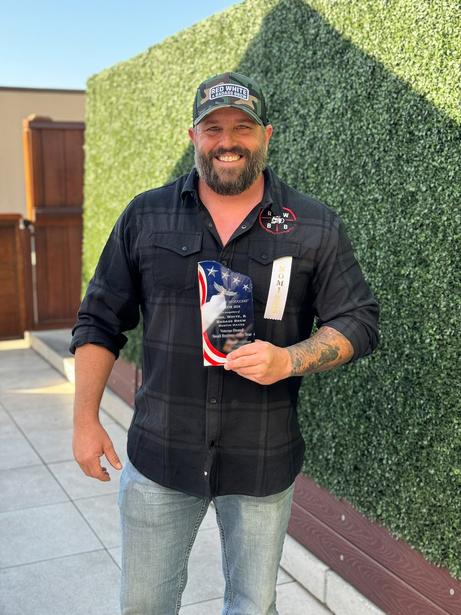

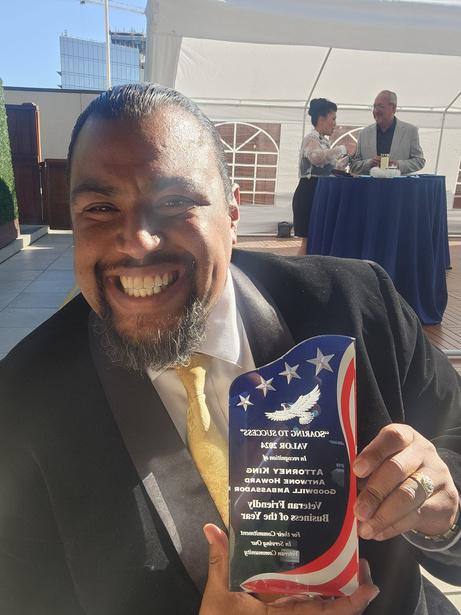




At Angel City Sports, we believe community has the power to change lives.
Through our Lift Off Travel Fund, athletes with physical disabilities and visual impairments can reach premier adaptive sports events and experience the joy of competition and connection.
Giving Tuesday, celebrated on December 2, is a global day of generosity that reminds us just how impactful that community can be. This year, your support can help more adaptive athletes soar.
For many adaptive athletes, especially veterans and first responders, the hardest part isn’t just finding motivation, it’s getting there.

Travel is one of the biggest barriers to participation in sport. The Lift Off Travel Fund helps remove that barrier by covering transportation, lodging, and logistics so that no athlete is left behind because of accessibility or cost.
U.S. Army veteran Mark Patton, shared:
“Where I live, it’s not that accessible, and as a disabled veteran, it’s just the psychological and the physical tolls isolation and exclusion can take already adds on to the burden that a lot of the disabled community carry. So to come here to such open arms and welcoming community, I couldn’t imagine being anywhere else.”
Stories like Mark’s remind us why access matters, because behind every journey is a veteran or athlete who just needs the chance to get there.
This Giving Tuesday, your support can help remove those barriers and open the door for more athletes to experience the power of community, belonging, and possibility.

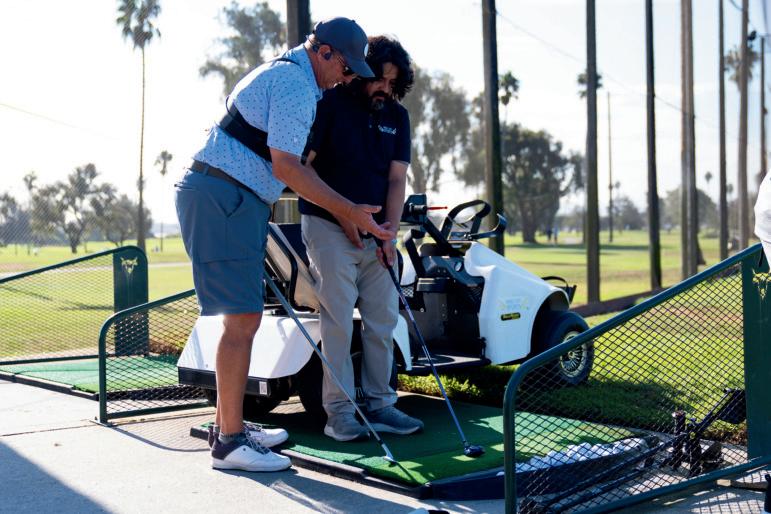
Travel isn’t just about getting there, it’s one of the biggest barriers adaptive athletes face.
Common challenges include:
Cost of transportation and lodging
Unreliable or inaccessible
pickup / drop-off
Physical support needed during travel
Stress and emotional strain of complex travel
Mobility equipment often damaged in transit
Your contribution to the Lift Off Travel Fund helps veterans overcome these barriers and reach life-changing events like Courage Weekend.

Military families move an average of every 2 to 3 years – that is 2.5 times more than civilian families – and often, those moves are long distance. Frequent relocations have a major impact on families, especially when it comes to building community. San Diego is home to approximately 115,000 active-duty service members and is considered the largest concentration of U.S. military in the world. That number increases exponentially when you factor in their families. At every duty station, these families need to hit the ground running-- finding work, schools, activities, friends, childcare, and other critical resources in order to be able to thrive in their new home.
That’s where the SAY SD Military Family Resource Center (MFRC) steps up. Nestled in the heart of Murphy Canyon since 1993, the MFRC is a non-profit entity that provides FREE programs, FREE essential resource referrals, and FREE family-friendly activities every week for the military community. All with the purpose of connecting service members and their family members to the community that they live in.
One facet of the MFRC is a program called the San Diego Military Family Collaborative (SDMFC). Founded in 2010, SDMFC provides a unique space where government programs, civilian organizations, and military families can come together. SDMFC holds monthly convenings that discuss challenges that military families face, along with providing time and space for the sharing of resources and the opportunity to network. The meetings are open to all military families and the organizations, programs, and people that support them.
The Military Family Resource Center is also a resource hub. The staff is available to help military-connected individuals navigate both military and non-military resources in San Diego and find the best fit for their needs. The personalized resource and referral service is completely confidential and completely free of charge.
One of the weekly programs that the MFRC hosts is their Playgroup geared towards parents and caregivers with children ages 0-5 years of age. The group meets every Wednesday from 10am-11am, rain or shine. When the weather is fair, they have free play outside followed by story time, a craft and then snack.



The center puts out a calendar of programming each month and reaches out to include community partners as co-hosts. They have an ongoing partnership with San Diego Navy Community Recreation (also known as the MWR) and in the past year they’ve hosted The Children’s Discovery Museum, The UCSD Rohner Lab, Resounding Joy and United thru Reading – just to name a few! They strive to create a safe, welcoming environment that encourages friendships between parents/ caregivers as well as providing much needed socialization for the children.
In a recent feedback survey, one parent from the center said, “The MFRC playgroup has been an absolute life saver! It has given my daughter and myself an outlet to grow and meet new friends! There [have] been so many resources that I wasn’t aware of until I started coming to MFRC!”
Anna, another regular attendee says, “My kids and I look forward to playgroups every week. Not only does it give my children an amazing way to socialize with other kids close in age, but it allows me to get to know other parents in the community, which I value very much.”
Community is the Key Military life has its own unique set of challenges. From feelings of isolation, through the chaos of relocation to the task of starting over every few years – military families continue to endure. The MFRC believes that building community is the key for families to not just survive but thrive. Providing resource referrals whether big or small, lending an ear, hosting a gathering – all these things play a pivotal role in helping others find their place in the community. The Military Family Resource Center is committed to the continued effort of creating community for the military families of San Diego.
“[We’d like to see] more playgroups throughout the week,” says the Smith family, “We would come every day if it were offered!”
“The MFRC showed me that I could go back to school and gave me so many resources. I had no idea these things were available. When I told Sarah I started a program, she was so excited for me!” – K
If you are interested in contributing to the expansion of this community via donation or community partnership, please reach out to us at mfrc@saysandiego.org

mfrc@saysandiego.org

Every Veterans Day, our nation pauses to honor the courage, sacrifice, and selflessness of those who have worn the uniform. Yet for many, the greatest battles begin after service ends. Too many service members, Veterans, and their families face invisible struggles — financial instability, food insecurity, housing loss, and the mental and emotional toll that can come with these hardships.
These challenges are deeply connected, forming a chain of hardship that can feel impossible to break without help. That’s where Support The Enlisted Project (STEP) comes in. By addressing the root causes of crisis — from emergency financial needs to long-term strength and resilience — STEP empowers families to take control of their futures and rediscover hope. Through one-onone guidance, education, and compassionate support, STEP restores and strengthens lives across the military and veteran communities. In San Diego and beyond, STEP continues to meet these trials head-on — helping service members, Veterans, and their families rebuild from hardship with dignity, confidence, and lasting independence.
Most Since its founding, STEP has touched more than 530,000 lives across 32 states — a number that continues to grow every year. The organization’s model pairs each client with a dedicated social worker certified in financial wellness. Together, they build personalized budgets, identify barriers to stability, and create an actionable plan toward long-term success.
The results are powerful: 86% of STEP clients report measurable improvement in their financial well-being after completing the program. That improvement translates directly to stronger families, healthier communities, and fewer crises.
At STEP, financial wellness isn’t just about dollars and cents — it’s about restoring empowerment, confidence, and hope. Each time a family regains control of their finances or avoids losing their home, the ripple effect can be life-saving. For many clients, this kind of support has not only prevented financial collapse but also helped them step back from the brink of despair. In this way, financial empowerment becomes a quiet yet powerful form of suicide prevention — strengthening mental and emotional resilience one family at a time.
In the last year alone, STEP provided targeted support to hundreds of military and veteran families"
- 92 families received automotive assistance — from repairs to insurance and loan support — totaling over $105,000. - 102 families were provided with emergency food, totaling $27,430 in aid. - 79 families were able to stay in their homes through help with rent, mortgages, or utilities, totaling $117,564 in housing support.
Beyond emergency assistance, STEP’s programs reach over 60,000 lives each year through educational and community-based efforts such as Cammies to College, Financial Freedom Seminars, Military Family Appreciation Carnival, Warehouse on Wheels, Sharing the Joy, and more. Each initiative reinforces a core belief: that every military and veteran family deserve a fair chance at success.
As the need for financial and stability support has grown, so has STEP’s capacity to meet it. In 2025, the organization moved its headquarters to 8320 Juniper Creek Lane, San Diego, CA 92126, a larger, more accessible space that allows STEP to expand its programs, engage more volunteers, and better serve service members and veterans across Southern California and beyond.
This move reflects not just organizational growth, but an ongoing commitment to innovation and community partnership. With applications coming in from across the country — and nearly 13% of clients referred by

friends or family, and 15% by their command — STEP’s model continues to build trust where it matters most: within the military and veteran community itself.
“We’ve seen firsthand how a little help applied at the right time in the right way can change everything for a family facing uncertain financial future,” says Tony Teravainen, CEO and Co-Founder of STEP. “Our goal isn’t just to solve a crisis — it’s to get them through this crisis in a way that makes it their last one.
STEP’s impact depends on a community that stands behind its service members long after the uniform is hung up. There are many ways to get involved — from volunteering and hosting donation drives to making financial contributions that directly sustain critical programs.
Visit teamstepusa.org to donate, volunteer, or learn more about the programs that restore stability for military and veteran families. For those in need, the website also provides an easy way to request assistance and connect with a financial social worker.
Restoring Hope. Changing Lives. Permanently.
This Veterans Day, as we honor the men and women who have served, we are reminded that service does

not end when deployment does. Organizations like STEP ensure that when our heroes come home, they have a community ready to stand beside them — ready to restore hope and change







THE SAN DIEGO VETERANS COALITION IS A COALITION OF OVER 150 UNIQUE NON-PROFITS, BUSINESSES, GOVERNMENT AGENCIES AND EDUCATIONAL ENTITIES ALL UNITED BY THE GOAL OF SUPPORTING MEMBERS OF OUR COMMUNITY WHO SERVED OUR COUNTRY IN THE ARMED FORCES, THEIR FAMILIES, AND THEIR CARETAKERS.
The San Diego Veterans Coalition was organized in 2009 and incorporated as a non-profit on May 24, 2011. Using the Collective Impact Model, SDVC is a premier San Diego County-wide monthly convener of over 150 unique member and participating organizations, businesses, and agencies, as well as convening many of that body in our four action groups, and other activities and events. The Collective Impact Model is based on leveraging relationships with other veteran and family serving organizations so that we may provide veterans and their families with a complete array of services and other opportunities.
Many of the organizations that belong to SDVC specialize in one field (education, housing, employment, healthcare). Knowing what services each other provides, we can offer comprehensive support to our local Veteran community. We are proud to work alongside a wide variety of non-profit and for-profit organizations, as well as governmental agencies and individuals. The SDVC is a catalyst that inspires collaboration and cooperation among service partners to deliver premier support for Veterans in the San Diego region and beyond.


SDVC is proud to have partnered with ONWARD OPS, which has partnered with the Veterans Administration, the Department of Defense, and local communities to support service members through the process from military to civilian life by matching them with one-on-one sponsors in their specific community.
ONWARD OPS Sponsors all complete a VA-Certified Sponsor Training Course and the Community Integration Coordinators are all validated as best-in-class, trusted, and capable partners in their local region. Our national network, working with the department of defense, the department of veterans affairs, and the department of labor, brings a team together in one common mission: to securely provide the information and relationships needed to help every transitioning service member successfully make the journey out of the military and into civilian life.
San Diego Veterans Magazine sat down with Lori Noonan, CEO of Capacity Builders, Standards for Excellence Licensed Consultant, and Board and Governance Certified Consultant, to discuss how veteran-serving and community nonprofits can strengthen their foundations during challenging economic times.
A seasoned leader with more than 30 years of nonprofit experience — and an in-house contributor to Homeland Magazine and San Diego Veterans Magazine — Lori brings a unique perspective shaped by both her serviceconnected background and her deep work with veteran-serving organizations across the country. Her firm, Capacity Builders, helps nonprofits of all sizes improve leadership, governance, fundraising, and sustainability — ensuring they can continue serving those who served us.

SDV Magazine: Lori, what inspired you to start Capacity Builders?
Lori Noonan: After three decades in nonprofit leadership — and as part of a military family — I saw too many good organizations struggling not because of their mission, but because of the structure behind it. Passion can start a nonprofit, but systems sustain it.
I founded Capacity Builders to help nonprofits move beyond survival mode. We strengthen strategy, governance, fundraising, and accountability so leaders can spend less time reacting and more time delivering impact. My goal was simple: help build the kind of organizations our veterans, families, and communities can truly count on.
SDV Magazine: “Capacity building” is a term we hear often. What does it really mean?
Lori Noonan: At its core, it’s about helping organizations operate at their best. It’s not just about funding — it’s about competence, confidence, and consistency.
We help leaders design structures that attract resources, manage growth responsibly, and maintain ethical, transparent practices. Sometimes that means refining a board’s role, improving donor communication, or creating performance systems that track outcomes.
Strong structure builds strong service — and that’s especially vital in the veteran space, where the needs are complex and growing.
SDV Magazine: How does the Standards for Excellence® framework help nonprofits stand out?
Lori Noonan: The Standards for Excellence program is like an accreditation for ethical and effective nonprofit management. It ensures organizations have sound governance, clear strategy, financial transparency, and accountability.
When a nonprofit aligns with these standards, it signals to donors, staff, and veterans that they take trust seriously — and that matters more than ever in a tight economy. Donors are asking tougher questions. Funders want to see outcomes. Organizations that demonstrate integrity and professionalism will rise above the rest.
SDV Magazine: What challenges are veteran-serving nonprofits facing right now?
Lori Noonan: Right now, many are facing mission overload. Veteran organizations often grow from personal passion — someone saw a gap and stepped in. That’s powerful, but it can lead to leaders trying to do it all.
In this economy, resources are tighter, and competition for grants and sponsorships is fierce. Collaboration is no longer optional — it’s essential. The veteran service ecosystem is strongest when organizations share data, coordinate outreach, and focus on their core strengths instead of duplicating efforts.
SDV Magazine: What role can veterans, families, and community members play in supporting these nonprofits?
Lori Noonan: Everyone can play a part — even if you’re not in nonprofit leadership. Ask yourself:
• How can I volunteer my time or professional skills to help a veteran-serving organization operate more effectively?
• Can my business or employer sponsor an event or program that strengthens veteran support services?
• What local nonprofits are filling critical gaps for veterans and families, and how can I amplify their work?
Community support doesn’t always mean writing a check. It’s also about helping these organizations stay visible, accountable, and connected.
SDV Magazine: What advice do you have for nonprofit leaders in today’s uncertain climate?
Lori Noonan: Be proactive, not reactive. Build infrastructure before the crisis hits. Focus on your people — your team, your volunteers, your board — and give them clarity and purpose.
Sustainability doesn’t happen by accident. It’s built through planning, communication, and alignment. The nonprofits that invest in these things now will be the ones still standing — and thriving — years from now.
SDV Magazine: Any final thoughts?
Lori Noonan: Veteran-serving organizations play a vital role in the fabric of our nation’s care network. But even the strongest missions need strong foundations.
Whether you lead a nonprofit, work for one, or support one, this is the time to invest in structure, leadership, and collaboration. If your mission matters — and it does — then so does the way you manage it. Build it well, and together we’ll build something that lasts. Learn more about Capacity Builders at www.nonprofitexcellenceprofessionals.org
The holiday season is often filled with joy, connection, and tradition. Families gather, friends reconnect, and communities come alive with celebration. But for many of our nation’s heroes, this time of year can be one of the most difficult.
Crowds can trigger post-traumatic stress. Loud noises, or even the chaos of festive gatherings, may evoke distressing memories of combat. And far too many service members and veterans spend the holidays alone, isolated from the support of family. For these warriors, the holidays are not just another season. They can intensify feelings of vulnerability and loneliness. That’s where Freedom Dogs, an Oceanside-based nonprofit, steps in.
A Mission Rooted in Healing
Freedom Dogs was founded on a simple but powerful belief: that the bond between a warrior and a specially trained service dog can transform lives. Since its founding in 2006, the organization has paired warriors recovering from PTSD and traumatic brain injury (TBI) with service dogs and professional trainers who provide unwavering support.
Freedom Dogs is the only accredited service dog organization working directly in the active-duty military space, partnering with the Wounded Warrior Battalion-West, headquartered at Camp Pendleton. This unique collaboration allows warriors in treatment and rehabilitation to receive hands-on support during one of the most challenging times of their lives.
“Our warriors face invisible wounds every day,” says Peggy Poore, Executive Director of Freedom Dogs.
Freedom Dogs operates two cornerstone programs designed to meet warriors wherever they are in their journey:
• The Partner Program
In this innovative approach, a dog-and-trainer team works alongside a warrior throughout rehabilitation and recovery. The dogs provide grounding and comfort in moments of stress, while trainers model coping strategies and emotional support. For many warriors, this program is the bridge that helps them return to active duty or navigate their transition into civilian life.
• The Partner for Life Program
For warriors whose needs are ongoing, Freedom Dogs provides a lifelong partner—a specially trained service dog carefully matched to their unique challenges.
These dogs are more than helpers; they are trusted companions who bring stability, confidence, and unconditional love every day.
Freedom Dogs covers all expenses for the lifetime of the service dog, ensuring graduates never carry the burden of cost.

When a senior dog transitions into retirement, a new service dog is placed with the warrior so that support, healing, and companionship continue without interruption.
A Warrior’s Story
Charles “Charlie,” a Vietnam veteran, knows this hope firsthand. After years of struggling with PTSD, anxiety kept him from social gatherings, and the weight of loneliness grew heavier. His wife Betty watched helplessly as he withdrew further from daily life.
“The hardest part about coming home,” recalls Charlie, “was not just coping with combat-related PTSD, but being treated so badly by society. People’s reactions made it devastating.”

Seeking support, Charlie joined Freedom Dogs’ program in 2022. After seven months, he was paired with his service dog, Chance. With Chance, Charlie began to rebuild his confidence, venture out in public again, and reconnect with loved ones. For both Charlie and Betty, Chance was more than a companion. He became a bridge back to connection and hope.

“Freedom Dogs is my lifeline,” Charlie says. “They have turned my life around and are my family. My life is better because of them.”
The impact of Freedom Dogs is felt year-round, but the holidays are a particularly critical time. While most are planning celebrations, our heroes are often navigating triggers others cannot see. A service dog by their side can mean the difference between isolation and connection, despair and hope.
With the help of supporters, Freedom Dogs provides what warriors need most during this season: comfort, joy, and a sense of normalcy. The reassurance of a trusted friend can bring peace to a time of year that might otherwise be overwhelming.
Freedom Dogs relies on the generosity of the community to fund its life-changing work. Donations make it possible to train dogs, support handlers, and sustain the programs that keep warriors connected and cared for. A year-end gift is not only tax-deductible, it’s a way to bring healing and hope when needed most.
“Your generosity truly makes a difference,” says Peggy Poore. “Every gift helps us reach another warrior, another family, another hero who deserves a second chance at joy and independence.”
Freedom Dogs celebrates its 20th anniversary in 2026 and is preparing to expand its reach. With the continued partnership of Camp Pendleton and the loyal support of the San Diego community, Freedom Dogs is positioned to help even more service members reclaim their independence and rediscover joy. But for now, the call is simple: be a lifeline for our military heroes.


This Veterans Day and holiday season, honor America’s heroes in a meaningful way. For many wounded warriors, the battle doesn’t end when they return home. And the holidays can be the hardest time of all.
Freedom Dogs pairs warriors with specially trained service dogs that bring healing, strength, and unconditional love. With your support, no hero has to face the holidays alone.

To learn more about Freedom Dogs or to make a year-end gift, visit www.FreedomDogs.org or call (760) 696-3076


During U.S. Army basic training, Dez Del Barba started to feel pain in his legs and a sore throat. One week later, he was fighting for his life.
He had Strep A, which turned into necrotizing fasciitis. Dez was given a 10% chance of survival. Doctors amputated his left leg, and his right leg was left permanently damaged with drop foot, requiring a brace.
PTSD and anxiety left him isolated and uncomfortable being out in the world.

“I was going through the motions, living day to day,” Dez says. “Then I met Service Dog Moby.”
After a life-changing diagnosis or injury, a service dog can be the perfect treatment. Founded in 1975, Canine Companions created the concept of the modern service dog. Today, over 8,400 teams have been placed, including over 600 of our nation’s veterans – entirely free of charge.
Dez recalls, “Meeting Moby was the best day of my life. It was pure joy and an instant connection. There are no other words to describe it.
”Canine Companions trains service dogs to assist veterans with a variety of everyday tasks, enabling them to move more freely and reintegrate into their communities.
Service Dog Moby helps Dez with physical tasks, such as turning on lights, retrieving his phone and wallet, and assisting in grabbing the supplies he needs to put on his prosthesis. Before Moby, Dez had to hop across the room, risking a fall on his remaining damaged leg.
Now Moby is improving his independence, safety and peace of mind.
Moby is also trained to reduce the impact of posttraumatic stress for Dez. “When the nightmares and anxiety come, he physically interrupts them with deep pressure, calming me instantly,” says Dez.
Service dogs for PTSD are trained in physical tasks to reduce anxiety, like making contact with a handler’s leg and nudging with their nose to interrupt anxious behaviors. These expertly trained dogs are also capable of creating a buffer in crowded places, entering a room to turn the lights on and retrieving medication.
Veterans can rely on their service dogs to interrupt and reduce nightmares by providing deep pressure or removing blankets to wake their human partner. Some teams use Canine Companions’ patented CanineAlert™ wearable technology as additional support.
“Moby has helped me in more ways than any doctor ever has. He has given me a reason to keep going and has shown me what true unconditional love is. Because of Moby, I now have less anxiety going out in public places. He gives me a sense of calmness that I can’t even describe.”
– U.S. Army veteran Dez with Service Dog Moby
CanineAlert™ - The Wearable Tech Augmenting Expertly Trained Service Dogs
Imagine if you could stop a nightmare before it starts. For veterans living with PTSD, CanineAlert can stop a nightmare before it starts. It means no longer reliving traumas night after night. It’s not just a dream. Pairing the expert skills of a Canine Companions service dog with our patented CanineAlert Device makes increased independence possible, night and day.
Over 600 veterans have turned to Canine Companions to regain the hope of a brighter future. With bestin-class service dogs and our patented wearable technology, a life of increased independence is possible. The CanineAlert Device is designed to do just that – revolutionize the way service dogs support individuals with disabilities.

Developed internally and in collaboration with experts in the field, the patented CanineAlert System uses biometric data to monitor the handler’s heart rate through wearable technology. This technology wirelessly communicates with the service dog’s collar device via an app. When irregularities in the wearer’s heart rate are detected, the device triggers a gentle vibration, prompting the service dog to intervene. Through specialized training, the service dog performs specific tasks tailored to the handler’s needs, such as interrupting a nightmare or aiding in their recovery process.
This innovative approach not only provides essential assistance but also facilitates faster and more effective responses from the service dog, ultimately preventing escalation.
With the implementation of the CanineAlert Device, cutting-edge technology operates in tandem with expertly trained service dogs -- enhancing the quality of life for our nation’s heroes.
THE IMPACT OF CANINE COMPANIONS SERVICE DOGS FOR PTSD IS PROFOUND
• 90% of Canine Companions veteran teams report feeling more comfortable in public places.
• 85% of veteran clients experience a decrease in nightmares and night terrors.
• 81% of teams report an improvement in their PTSD symptoms.
• 41% report a decrease in medication use.
“Getting Moby was the greatest decision of my life,” Dez remarks. “He has made every aspect of my life more positive and brighter.”
Learn more at canine.org/veterans

50 Years of Independence
Help Our Nation’s Veterans Regain Independence Through FREE Service Dogs
GET INVOLVED
• Volunteer to raise a future service dog
• Help raise awareness at events
• Join your local volunteer chapter
APPLY FOR A FREE SERVICE DOG
• Learn more about Canine Companions and our best-in-class service dogs for veterans
• Make more matches, sooner. Donate now!
canine.org/veterans

When veterans return home after surgery, injury, or hospitalization, the battle isn’t over - it’s just entered a new chapter. Recovery can be challenging, especially when mobility, support, confidence, and independence feel just out of reach. That’s where Dependable Nursing steps in, helping San Diego’s heroes heal where they feel strongest: at home.

For over 20 years Dependable Nursing has been serving the San Diego, Riverside and Orange counties with inhome skilled nursing care and therapies. As a Medicare and Medi-Cal certified home health agency and an approved Tricare and TriWest provider, Dependable Nursing brings together skilled nursing, physical therapy, occupational therapy, and speech therapy to help veterans and military families regain their strength and independence after hospital stays or surgical procedures.
For military families, Dependable Nursing also provides specialized pediatric nursing under Tricare - including care for children with G-tubes and tracheostomies. These cases require exceptional skill and compassion, and the Dependable team approaches every visit as a partnership with the child’s family to ensure safety, stability, and comfort.
Our mission is simple but powerful: to provide exceptional, high-quality in-home care that patients can trust. From the moment a patient comes under our care, they’re treated as more than a patient - they’re a person with a story, goals, and the right to be truly heard.
“Many of our patients are veterans or active-duty families,” says Carly DeLuca, owner of Dependable
Nursing. “They’ve dedicated their lives to this country. Our goal is to make sure they receive care that honors that service - dependable, compassionate, and delivered with heart.”
Each care plan begins with a thorough assessment guided by a physician’s orders and is customized to the patient’s needs. Whether helping a veteran rebuild strength after joint surgery or supporting a stroke survivor through speech therapy, Dependable Nursing brings hospital-level professionalism directly to the home - ensuring every patient feels seen, supported, and safe.
- Faster Recovery and Reduced Hospital Stays
- Personalized, One-on-One Care
- Comfort & Familiarity
- Support for Family Caregivers
- Cost-Effective Alternative
Our core services include:
• Skilled Nursing: Comprehensive care including wound care, post-surgical recovery, medication management and administration, as well as patient education for long-term health and wellness.
• Physical Therapy (PT): Helping patients regain strength, mobility, and confidence following orthopedic surgery, injury, or cardiac recovery.
• Occupational Therapy (OT): Helping patients adapt to daily activities, improve mobility, and create safe home environments.
• Speech Therapy (ST): Restoring speech, swallowing, and communication skills after stroke or illness.
Dependable Nursing’s commitment doesn’t end at the doorstep - it extends deep into the heart of San Diego’s veteran community.

The agency is an active member of the San Diego Veterans Coalition and Veterans Village of San Diego, collaborating to improve access to in-home therapy and healthcare for veterans across the county. Carly also serves on the Military Affairs Advisory Council through the North San Diego Business Chamber, strengthening community partnerships that connects healthcare and veteran advocacy.
Dependable Nursing also proudly supports the Dancing Veterans of San Diego, a nonprofit that helps veterans heal emotionally and physically through movement.
You’ll often find the Dependable team at community events like the San Diego Veterans Parade, not just as healthcare providers, but as neighbors, volunteers, and proud supporters.
“Being dependable means being present,” Carly explains. “We’re here to provide more than care - we’re here to stand beside our veterans and military families in every way we can.”

- Certified: Medicare / Medi-Cal Home Health Agency
- Approved Provider: Tricare, TriWest, and San Diego Regional Center
- Services: Skilled Nursing, Physical Therapy, Occupational Therapy, and Speech Therapy
- Specialties: Post-surgical recovery, wound care, chronic condition management, G-tube and tracheostomy pediatric care (Tricare)
- Community Partners: San Diego Veterans Coalition, Veterans Village of San Diego, Military Affairs Advisory Council (North San Diego Business Chamber), and Dancing Veterans of San Diego
- Service Area: All of San Diego, Riverside, and Orange Counties
The VA works hard to provide home healthcare services to veterans. When additional support is needed, they refer veterans to trusted, VA-approved community providers like Dependable Nursing.
As a veteran, you have the right to choose your home health care provider from that list — and we’d be honored to serve you with compassionate, expert care tailored to your unique needs.

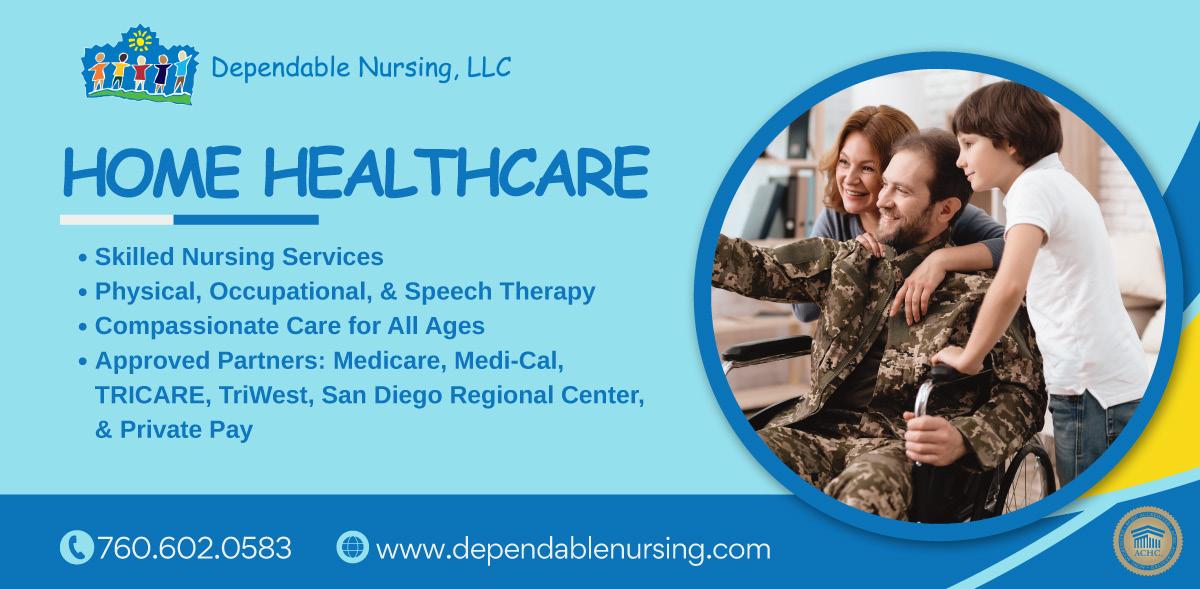
By Shelly Dew
When Colonel Lee Farmer retired after 32 years in the United States Marine Corps, he wasn’t searching for a new mission—but he found one. Today, as a member of the Board of Directors at Hospice of the North Coast, Farmer continues to serve with the same dedication that guided him throughout his military career.

“I served 32 years in the Marine Corps, and I’m very thankful for that opportunity,” Farmer said. “After retirement, I wanted to do something meaningful with good people and a strong mission. When I learned about Hospice of the North Coast, it just fit. I could use my experience to help others.”
"The Marine Corps and hospice have very similar missions—take care of your people, and they’ll take care of the mission.”
— Col. Lee Farmer, USMC (Ret.)
At first glance, the Marine Corps and hospice care may seem like entirely different worlds. But for Farmer, the connection is clear.
“In the Marines, you take care of your people so they can take care of the mission,” he explained. “Hospice is the same way—when you take care of your staff and volunteers, they care for patients and families with compassion and dignity.”
Both organizations depend on structure, teamwork, and unwavering commitment to service. For veterans, hospice work can be a continuation of that lifelong sense of purpose—supporting others through life’s final mission.
Redefining What Hospice Means
Farmer admits that, like many, his understanding of hospice used to be limited. “Most people think hospice is only about end-of-life care,” he said. “But it’s really about quality of life—about dignity, comfort, and supporting families every step of the way.”
Hospice of the North Coast provides far more than medical care. Its team offers emotional, spiritual, and
bereavement support—services that deeply resonate with veterans and their families.
“Our bereavement program is critical,” Farmer said. “It helps families adjust to loss, and that’s something veterans understand well—caring for each other after the battle.”
• Respect for Service: Specialized programs honor military traditions and values.
• Understanding of Trauma: Staff trained in PTSD, moral injury, and military culture.
• Connection & Camaraderie: Fellow veterans provide companionship and shared understanding.
• Family Support: Emotional and spiritual care for loved ones.
One of the programs closest to Farmer’s heart is We Honor Veterans, a partnership between Hospice of the North Coast and the U.S. Department of Veterans Affairs. The program ensures veterans receive the specialized care and recognition they deserve.

“They invite active-duty service members or veterans to visit patients and talk with them,” Farmer explained. “I once met a 99-year-old veteran who hadn’t spoken much. When I mentioned his service, his eyes lit up—he talked for hours. His family said they’d never heard those stories before. That’s the power of connection.”
For veterans who may hesitate to reach out, Farmer offers this advice:“You’ve spent your life being strong and self-reliant. Hospice isn’t about weakness—it’s about support, dignity, and ensuring your family is cared for with the same honor you showed in service.”
Leadership in a New Arena Farmer’s path to hospice leadership began with curiosity— and a challenge. “I once told a hospice nurse I didn’t think I could work in hospice because I didn’t understand it,” he recalled. “She brought me books to read, and I realized how wrong I was.”
That conversation led to an invitation to join the Hospice of the North Coast Board of Directors.
“Serving on the board allows me to contribute strategically,” he said. “We have a clear mission, strong structure, and incredible people—all the ingredients of a successful operation.”
“Leading Marines and guiding a nonprofit aren’t all that different—you need mission clarity, solid structure, and the right people in the right jobs.”
—
Col. Lee Farmer, USMC (Ret.)
Honoring All Who Served
Farmer has also helped expand the hospice’s veteran outreach, including the Welcome Home Vietnam Veterans ceremony—a deeply emotional event that honors those who were never properly thanked.
“It made me feel like I was back on active duty,” he said. “Seeing those veterans stand, share, and heal—it was incredibly moving.”
He’s proud to see a hospice organization investing so deeply in veterans. “It’s unique,” he said. “Hospice of the North Coast doesn’t just serve veterans at the end of life —it honors them throughout.”
Carrying the Mission Forward
For Colonel Farmer, service never ends—it simply evolves.
“The values of he Marine Corps—honor, courage, commitment—are alive in hospice care,” he said. “To my fellow veterans, I’d say this: you still have a mission. Whether it’s volunteering, supporting others, or learning more about hospice, your service continues. Hospice is about life, dignity, and the strength we share when we serve together.”
Get Involved in the We Honor
• Become a Vet-to-Vet volunteer.
• Participate in Final Salutes for hospice veterans.
• Learn more at www.hospicenorthcoast.org

San Diego Veterans Magazine recently had an opportunity to visit with Katherine Chih, a retired nurse and massage therapist from Oceanside whose life changed when she stepped in to help a U.S. Navy veteran friend manage his medications. What started as a favor became a full-time commitment as a military-veteran caregiver.

SDV Magazine: Tell us a little about your story and how you became an Elizabeth Dole Foundation Caregiver Fellow.
Katherine: People often tell me my story is unique, but to me, it’s simply my journey. After retiring from the military, I spent a few years traveling the world, enjoying the freedom that came with it. Eventually, I felt called to do something more meaningful. I went back to school to become a massage therapist, focusing on Oriental acupressure techniques with the goal of helping veterans experiencing phantom pain.
While in school, I met Aaron, a retired Navy veteran, who asked if I could help him manage his appointments and medications. Neither of us knew then how much that decision would change both our lives. I began using my training to help him manage his PTSD symptoms—and the results were immediate. Seeing that transformation inspired me to shift my focus from phantom pain to helping veterans with PTSD.
As for how I became an Elizabeth Dole Foundation Caregiver Fellow, I came across an email about the program and decided to apply. It’s truly an honor to serve as a Fellow. Every day brings new lessons and opportunities to grow and advocate for others.
SDV Magazine: How did you first realize you were a caregiver?
Katherine: Caring for others has always come naturally to me. I’ve worked in the medical field and have always found fulfillment in helping patients—it’s a deep sense of purpose. With Aaron, I often don’t even think of myself as a “caregiver.” To him, I’m more like a mom, and that’s how I see our relationship too. It’s only when others point out that I pause and realize—yes, I am a caregiver.
SDV Magazine: As a veteran caring for a veteran, what does Veterans Day mean to you?
Katherine: Veterans Day is deeply personal for me. I usually spend it quietly, reflecting on my own service in the Army and Navy—and the sacrifices of others past and present. Aaron doesn’t enjoy crowds, but we like to support local vendors who serve the veteran community.
When we’re out together, people often thank him for his service but overlook me—until he says, “She served too!” The looks that follow are always interesting. Some people thank me; others seem surprised. That experience made me start wearing my “Retired Veteran” cap on Veterans Day. I don’t wear it for recognition, but as a quiet reminder—to myself and others—that I served too.
SDV Magazine: How can caregivers like you get involved with the broader military and veteran caregiver community?
Katherine: That’s the million-dollar question. The VA here in San Diego offers great programs, including inperson and virtual support groups. But as caregivers, time is our biggest challenge—it’s not always easy to step away for meetings or join a Zoom call.
Caregivers can get involved with the broader military and veteran caregiver community through the Elizabeth Dole Foundation by joining the Hidden Heroes online community, participating in the Dole Caregiver Fellows program, engaging with local Hidden Heroes Communities, attending events and town halls, and sharing their stories to raise awareness and support for other caregivers. These opportunities help caregivers connect, advocate, and strengthen the nationwide network of support for military and veteran families.
SDV Magazine: California has one of the largest veteran and caregiver populations in the country. How do you see caregivers supporting each other and driving change across the state?
Katherine: California’s size is both a blessing and a challenge. Our community is large but spread out, making in-person connections hard. I stay in touch with a few caregivers over coffee every few weeks— many prefer small, private settings where they can share openly.
Caregiver-led, informal groups could really help. Stigma and fear still linger—some worry that being honest might reflect poorly on them or their veteran.
Big group outings aren’t for me—I find more value in small, genuine conversations where we can connect and support each other.
There’s no easy fix—California’s geography and traffic make gathering tough—but even small, personal efforts can build meaningful connections and strengthen our network. Join our Hidden Heroes community at: https://hiddenheroes.org
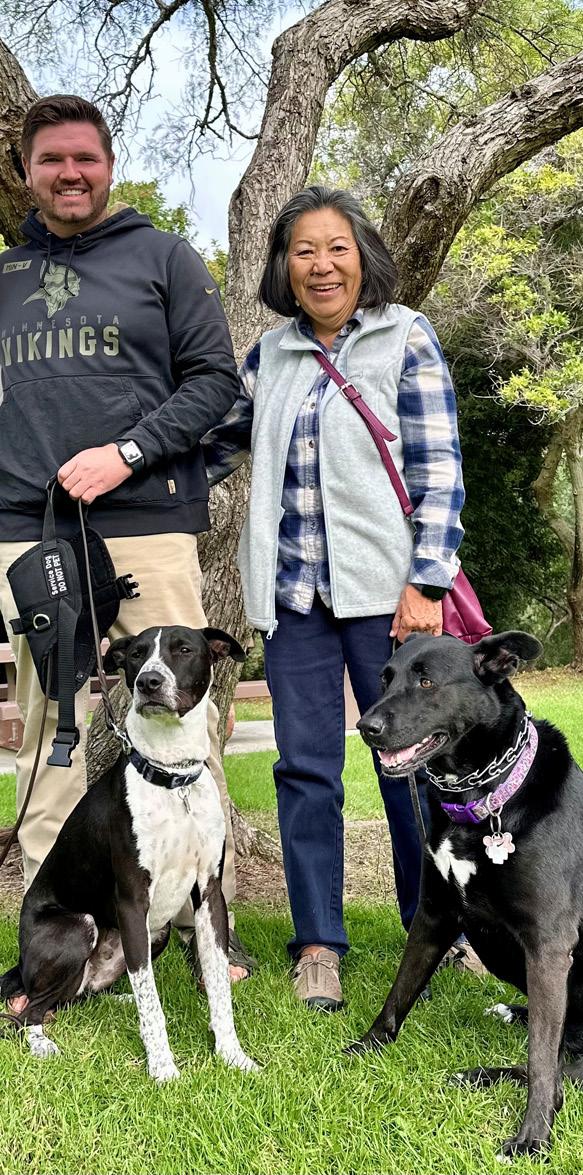

Navigating the resources
to veterans can be confusing, but San Diego Veterans Magazine believes no veteran should have to go it alone.




For 37 years Southern Caregiver Resource Center (SCRC) has been the leading nonprofit organization in San Diego and Imperial Counties, providing free, vital services to family caregivers of frail older adults and those living with Alzheimer’s disease and related disorders. Additionally, San Diego also stands as a vibrant hub for military and veteran families, reflecting its deep-rooted connection to military service and community. Throughout the years, SCRC has been a source of support for veterans and their families navigating the complex tasks of caregiving.
November is a poignant month for honoring and celebrating the immense contributions of both veterans and family caregivers. As we observe Veteran’s Day, we pay tribute to the brave men and women who have served our country with valor and sacrifice. This month also marks National Family Caregivers Month, a time to recognize and appreciate the unsung heroes who provide daily care and support to others, often juggling numerous responsibilities with unwavering dedication. It’s a moment to shine a spotlight on their resilience and commitment, acknowledging the unique challenges they face and the profound impact of their care. By coming together to celebrate these individuals, we not only honor their extraordinary services but also reinforce our collective commitment to supporting and valuing their essential roles in our lives and communities.
Caregiving is a profound act of love and dedication, but it can also be an overwhelming experience, particularly for those supporting loved ones with chronic conditions or dementia. This is where SCRC steps in, offering a comprehensive suite of services designed to alleviate the burdens faced by caregivers. From individual counseling and support groups to legal and financial consultations, education, care planning, case management, and respite care, SCRC is a one-stop resource for families in need.
With its mission to help families and communities master the challenges of caring for adults with chronic and disabling conditions, SCRC plays a crucial role in
enhancing the quality of life for both caregivers and care-receivers. This support is especially meaningful for families caring for veterans, who often face unique challenges due to the specific needs arising from military service.
One of SCRC’s standout initiatives is the TLC (Thrive, Learn, Connect) program. This evidence-based program is specifically designed for caregivers managing the complexities of caring for someone with memory loss, Alzheimer’s disease, or other forms of dementia. The TLC program teaches caregivers a range of strategies to cope with stress, manage challenging behaviors, and address mood fluctuations. Caregiving can be fraught with moments of frustration and isolation. TLC addresses these issues head-on by teaching caregiver’s techniques to bounce back from crises and manage daily challenges effectively. The TLC program recognizes that in order to provide the best care, caregivers must first take care of themselves. These techniques not only help caregivers manage the care-receiver’s condition, but also promote their own emotional well-being. The TLC program is more than just a set of strategies; it’s a lifeline that empowers caregivers with practical tools and emotional resilience.
Veterans and their families often face unique caregiving challenges, including those related to service-related injuries, mental health issues, and the general complexities of aging. SCRC’s services are particularly beneficial for this community, providing tailored support by State Licensed Counselors and Master Level Clinicians that address their specific needs. By focusing on both the caregiver’s and the veteran’s needs, SCRC ensures that the care provider is both compassionate and effective.
The dedication of SCRC to reducing caregiver burden and improving caregiver health has been demonstrated through its extensive services and programs.
For nearly four decades, SCRC has been a guiding light for families, helping them navigate the challenges of caregiving with expertise and empathy. SCRC is more than a service provider, it is a vital ally of caregivers, particularly those supporting veterans and their families. With its comprehensive range of services and its impactful TLC program, SCRC continues to make a profound difference in the lives of those who dedicate themselves to caring for others.
For those family caregivers in San Diego County seeking support and guidance, SCRC stands ready to assist. Through its mission of helping families and communities’ master caregiving challenges, SCRC ensures that no caregiver faces their journey alone.
If you would like to support Southern Caregiver Resource Center to continue providing free supportive services to family caregivers, you can participate in SCRC’s virtual 5K Caregiver Strong. You can complete this 5K at your own pace, tracking your distance as you go. By participating, you will receive a printable bib and a Finisher’s Certificate. This virtual 5K is open to the public and you can learn more and register at: www.caregivercenter.org/5K

If you would like to contact Southern Caregiver Resource Center, you can call us toll free at (800) 827-1008. We are available Monday through Friday from 8 a.m. to 5 p.m. If you call outside those hours, you can leave us a message or email us at scrc@caregivercenter.org
















